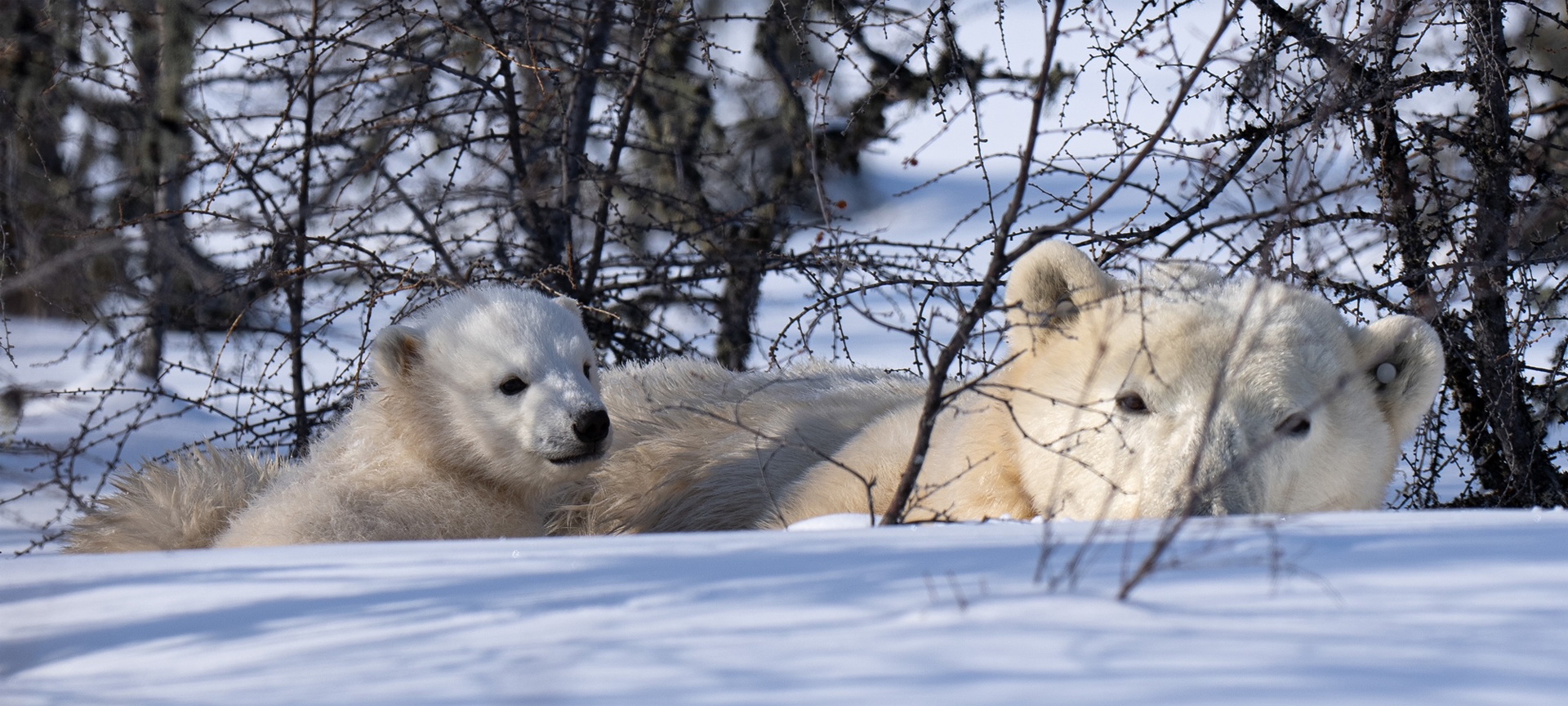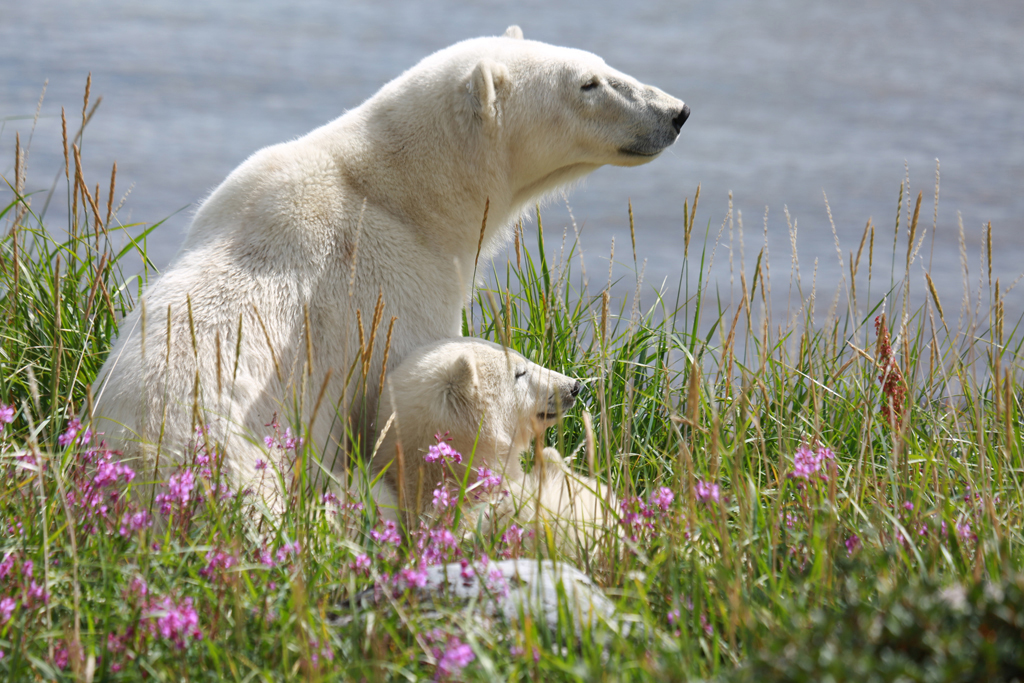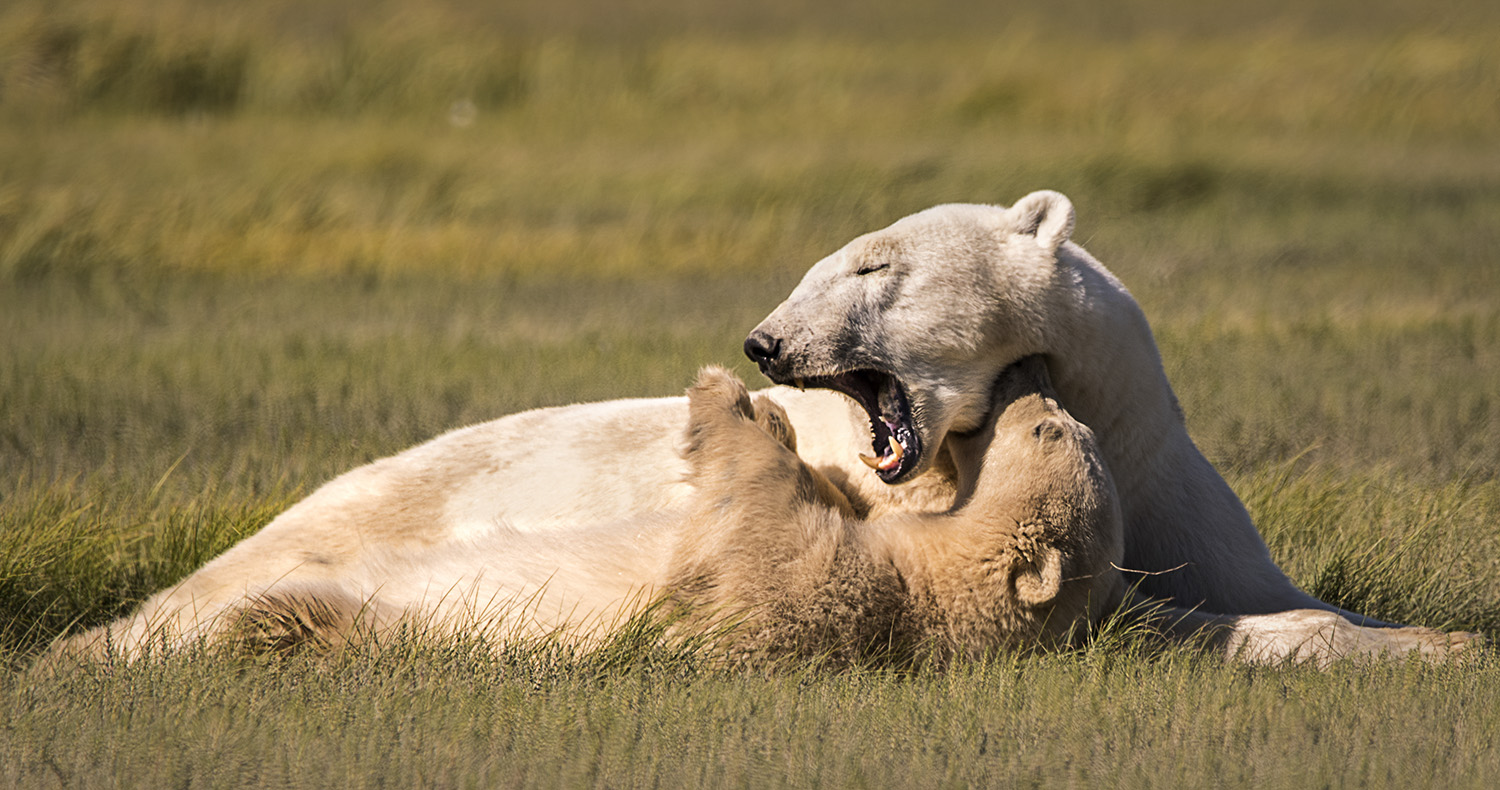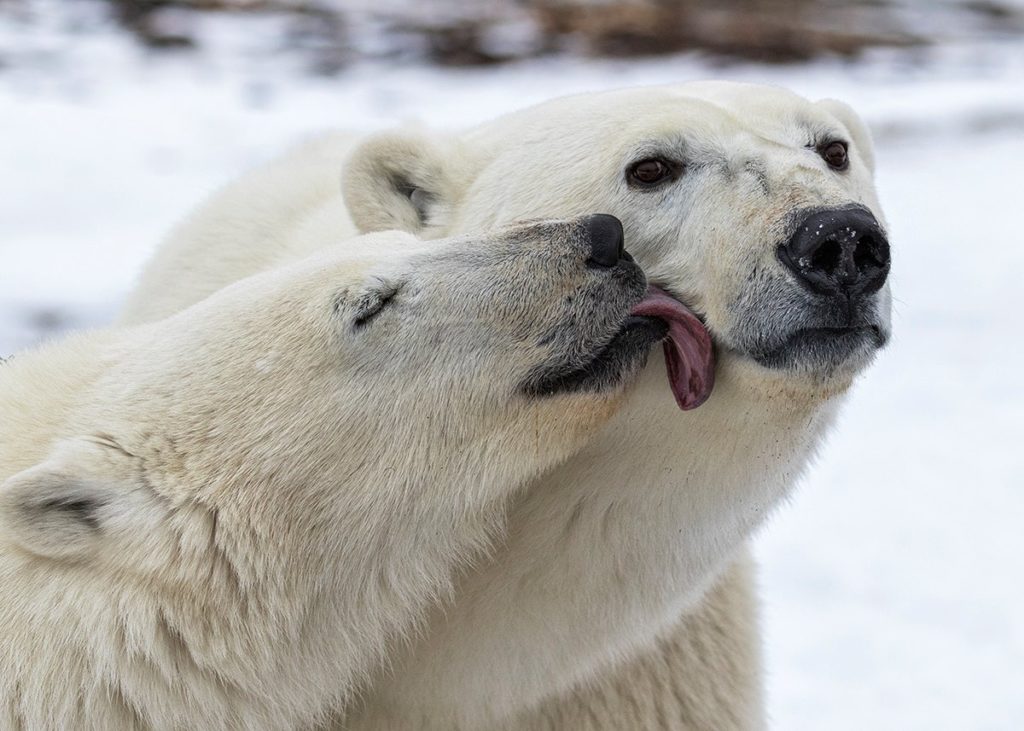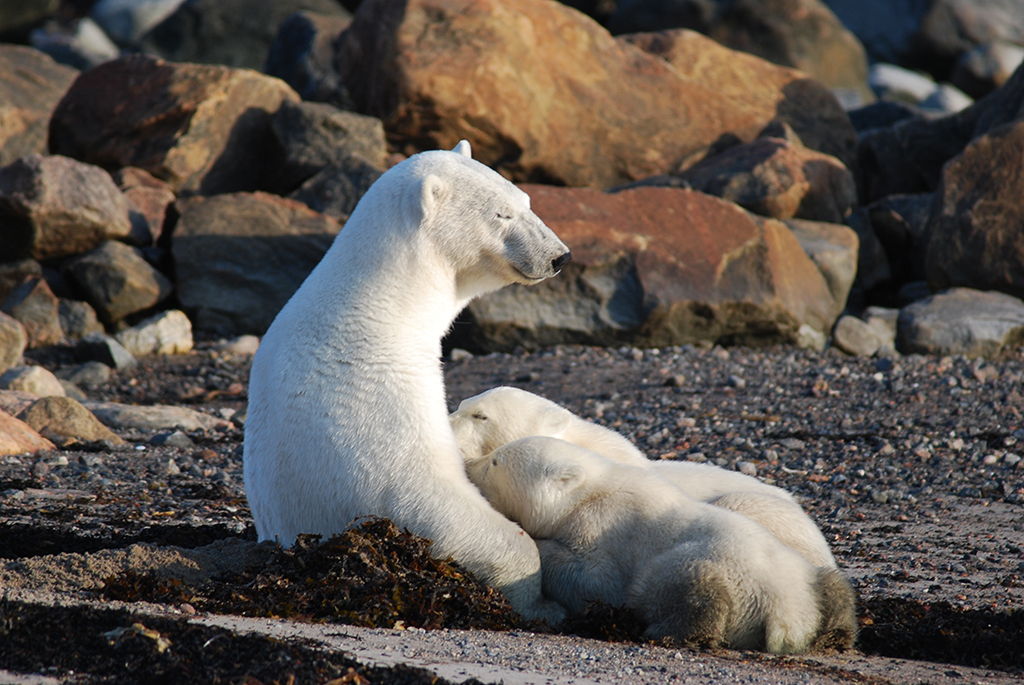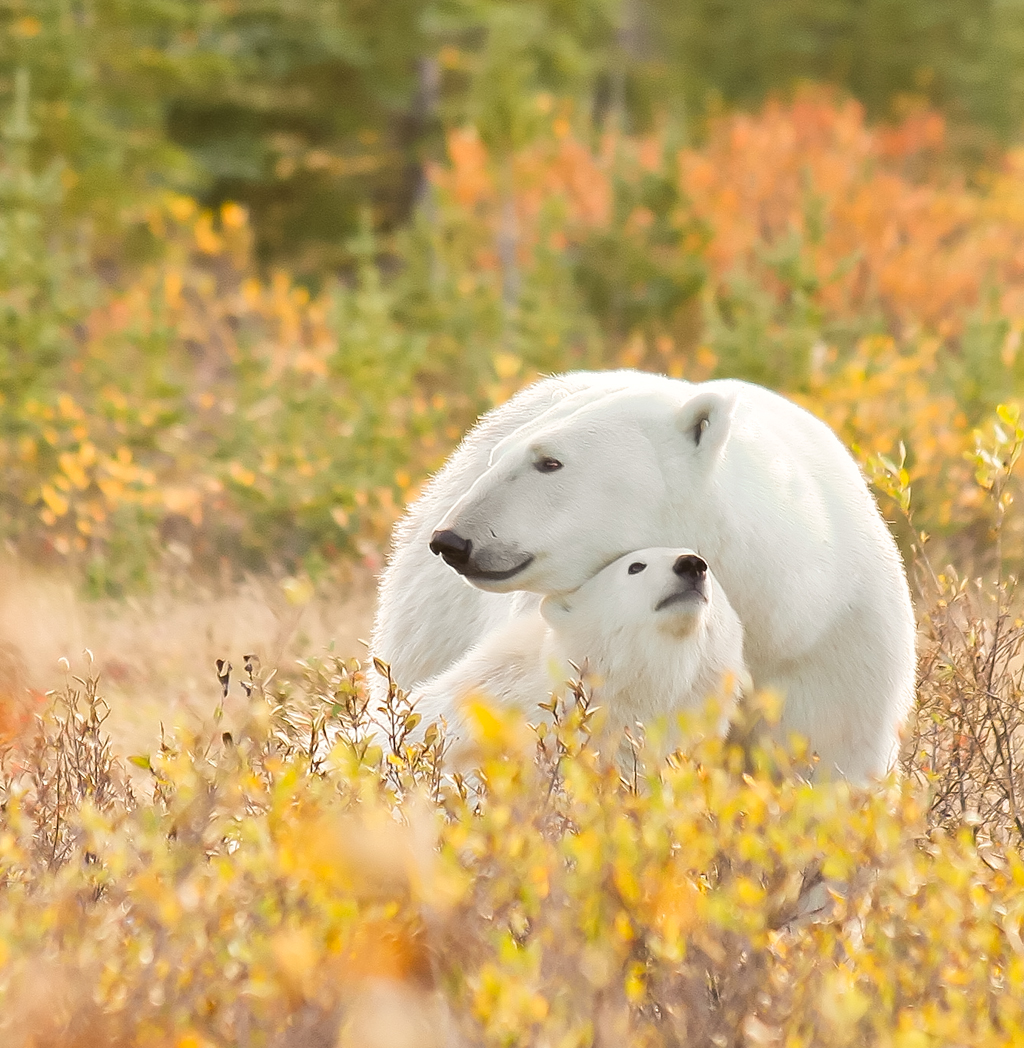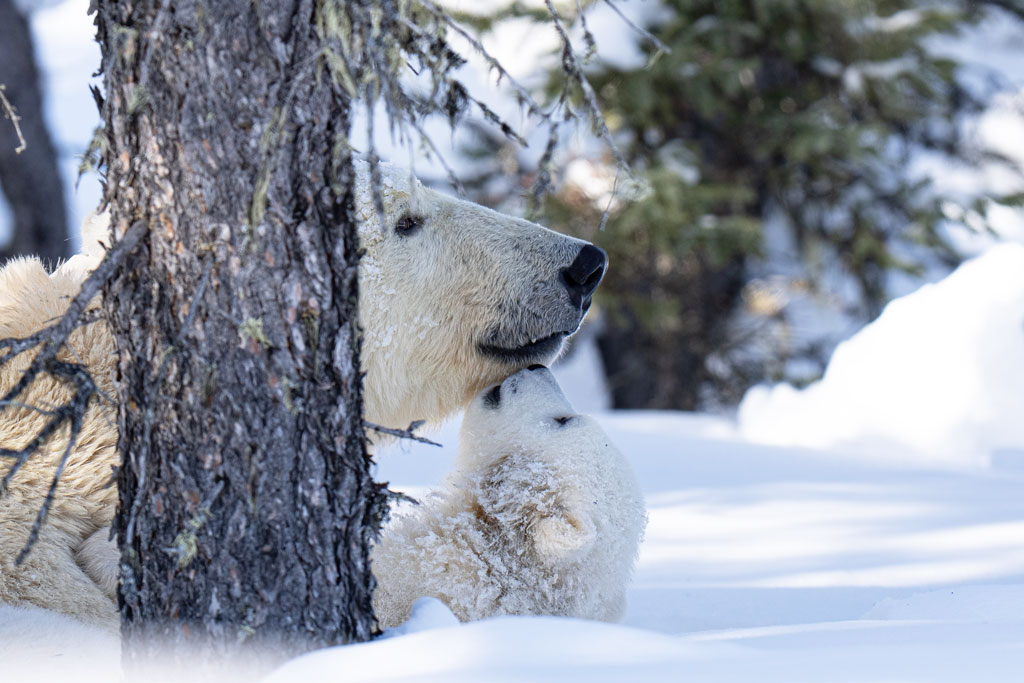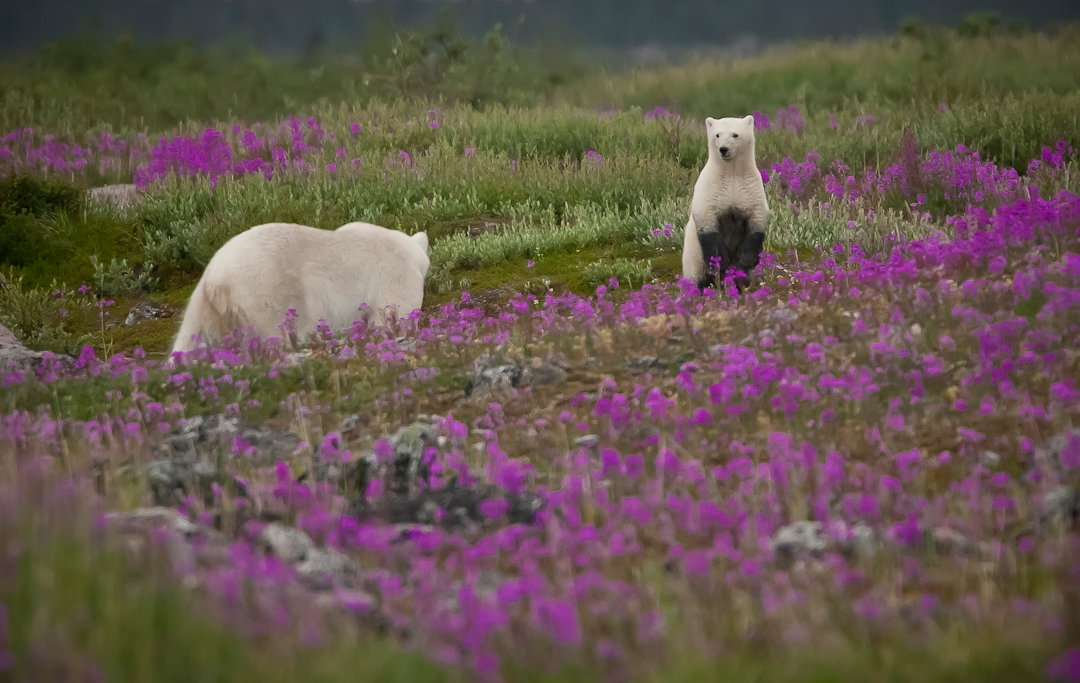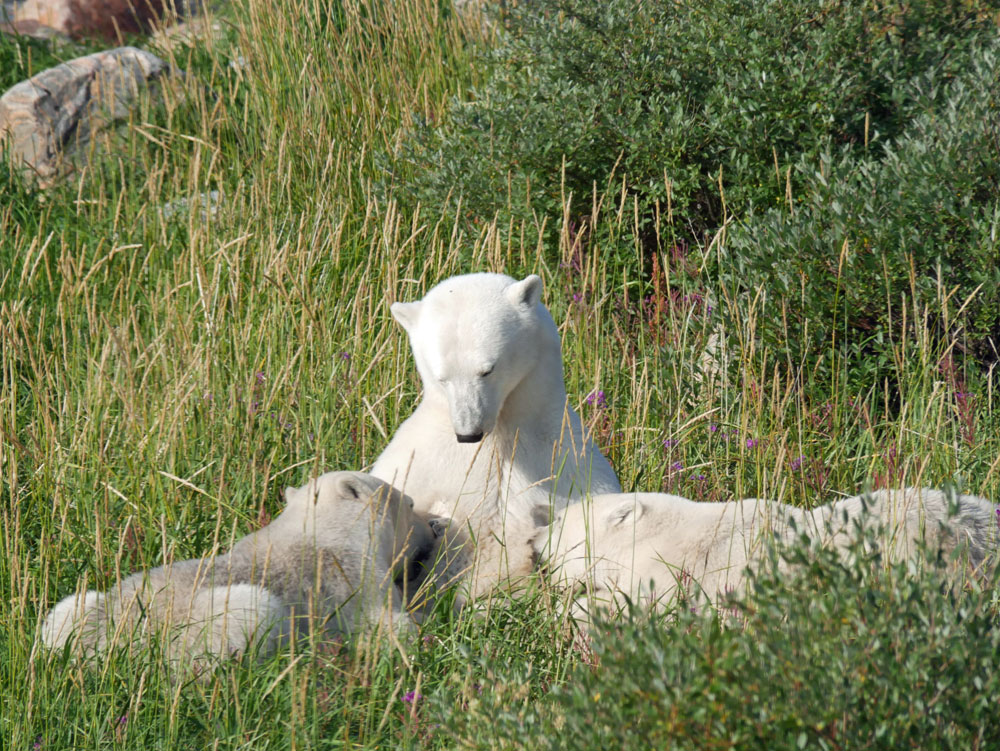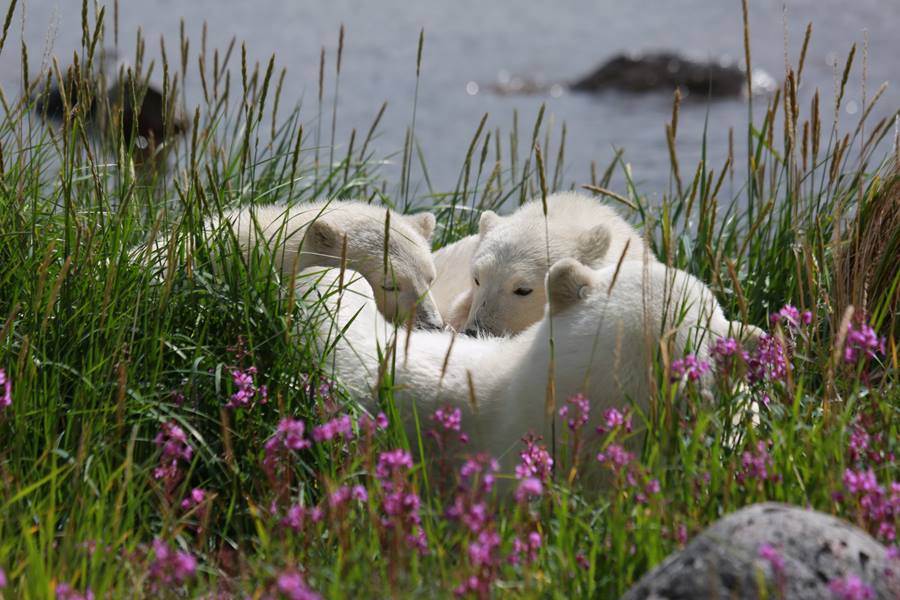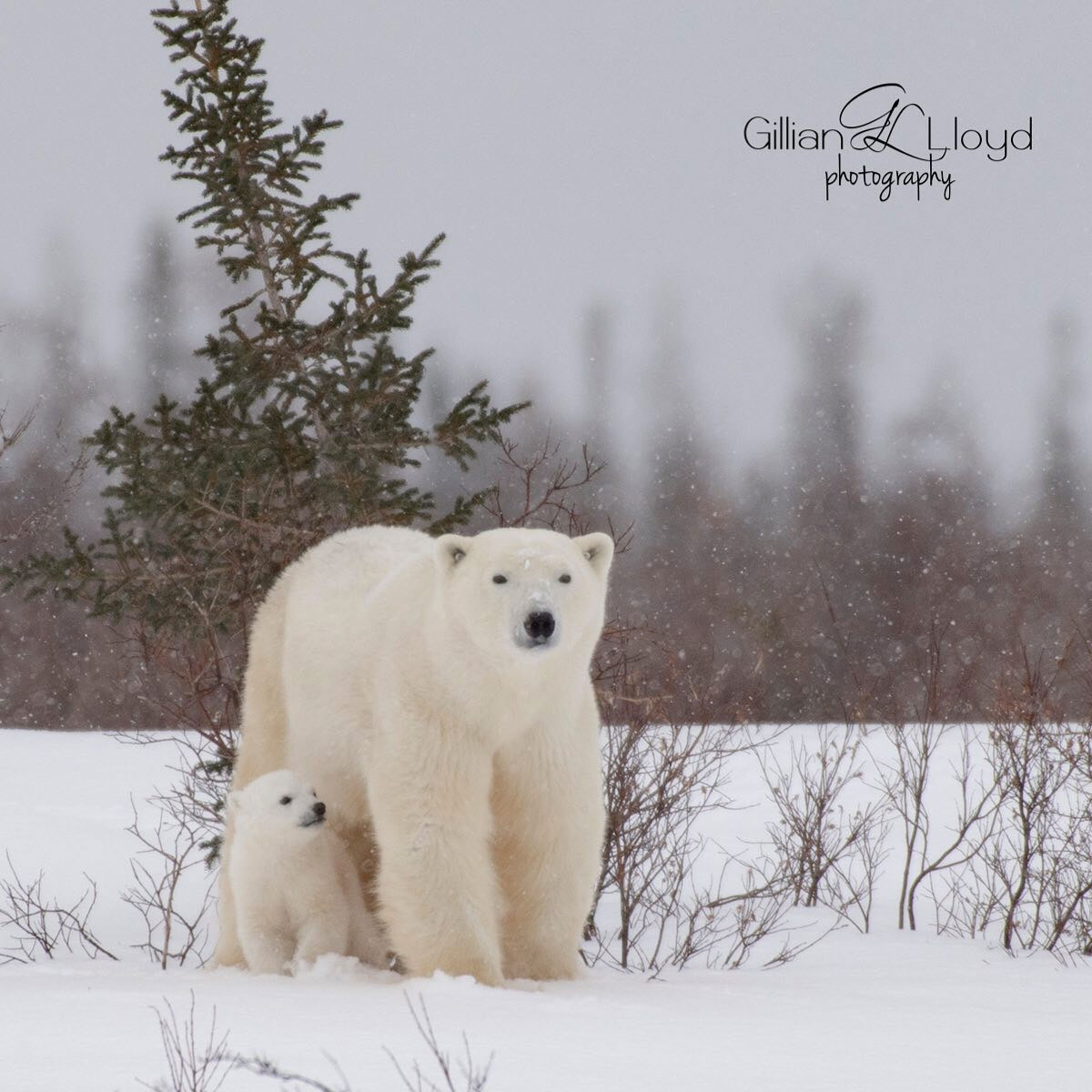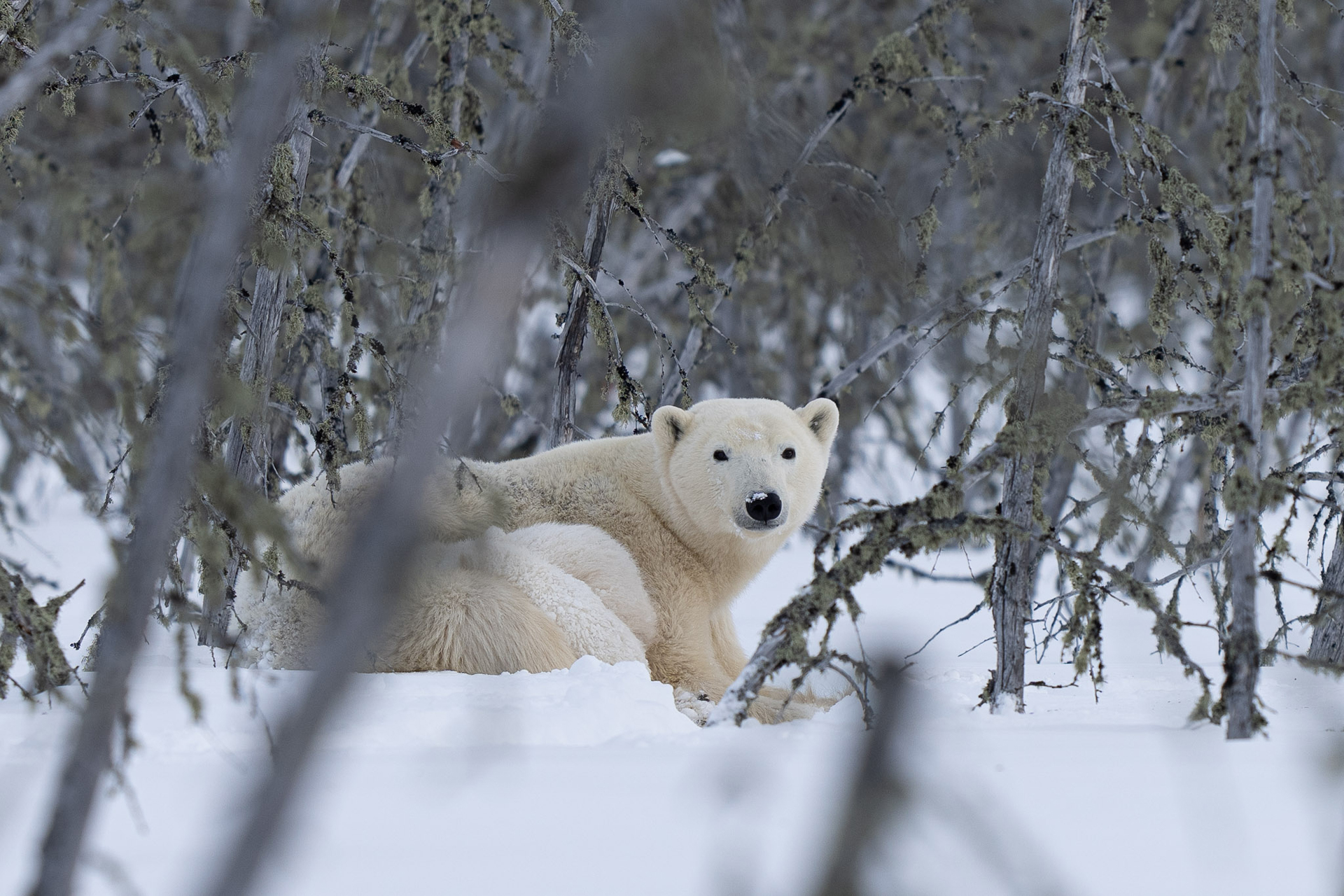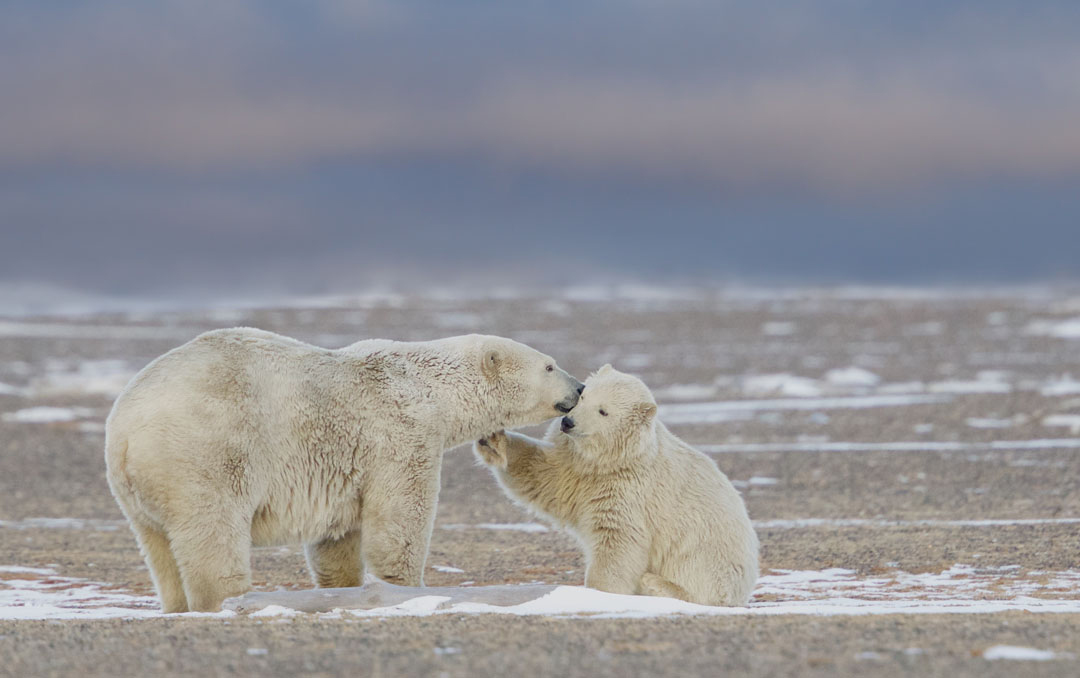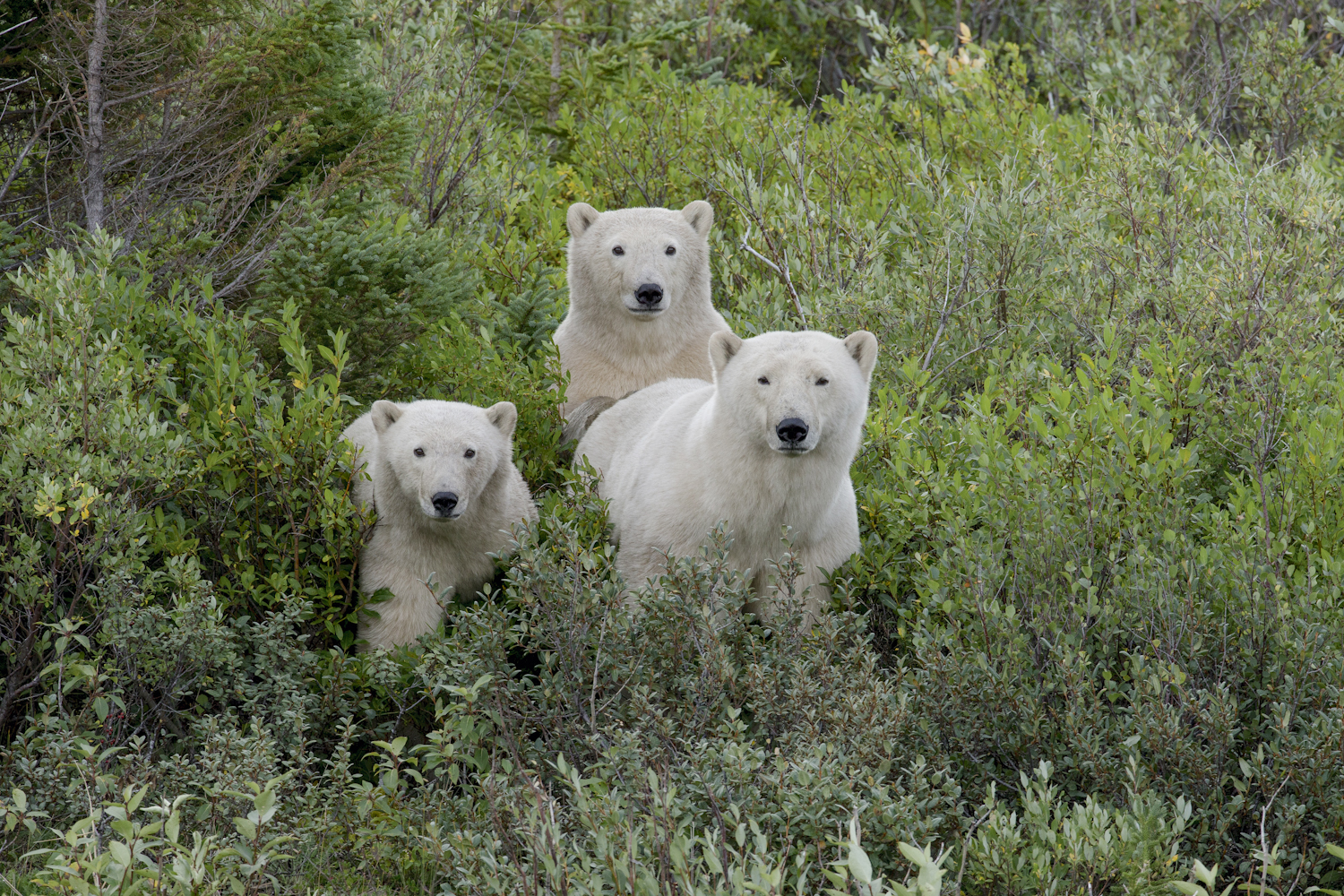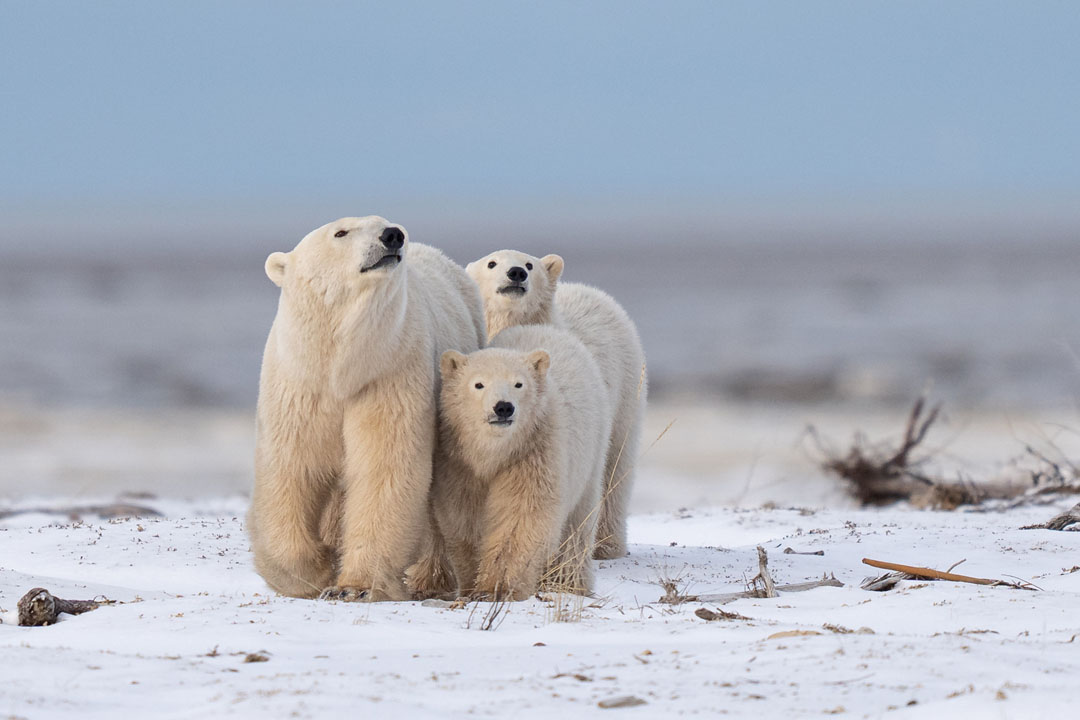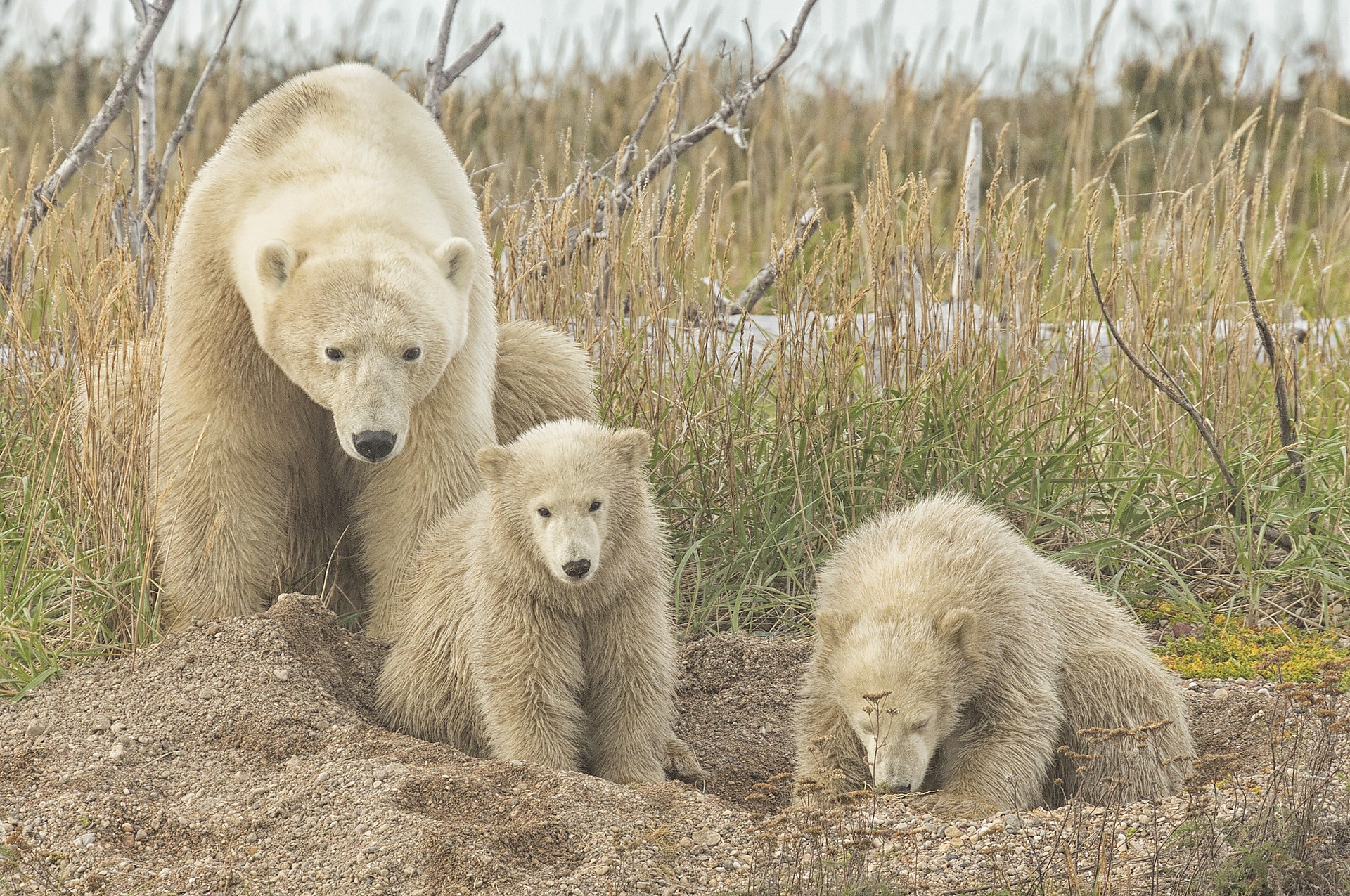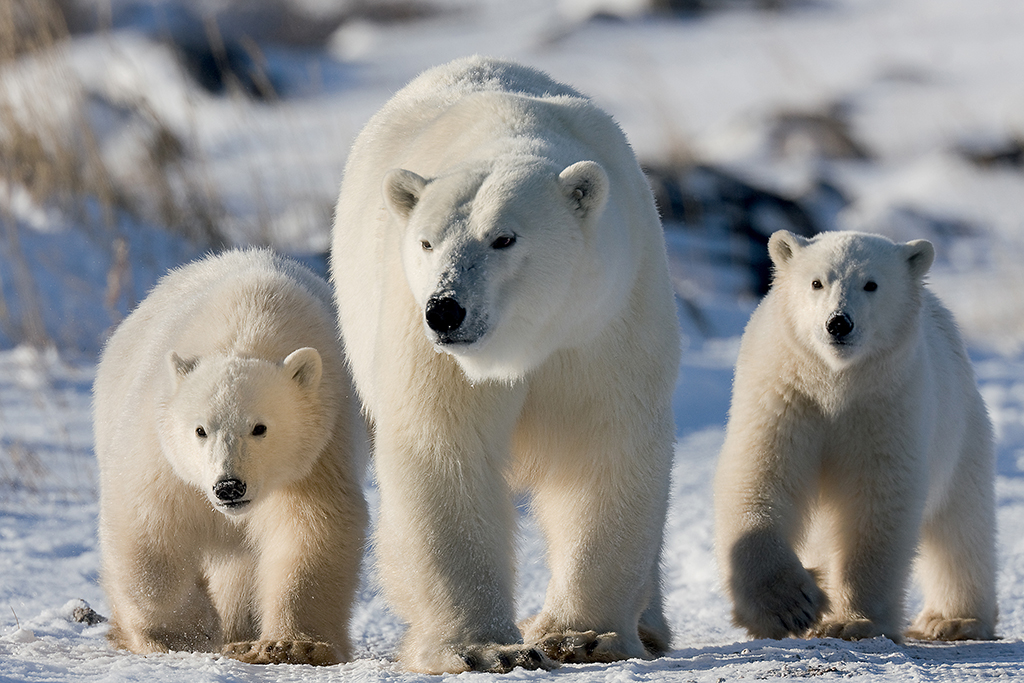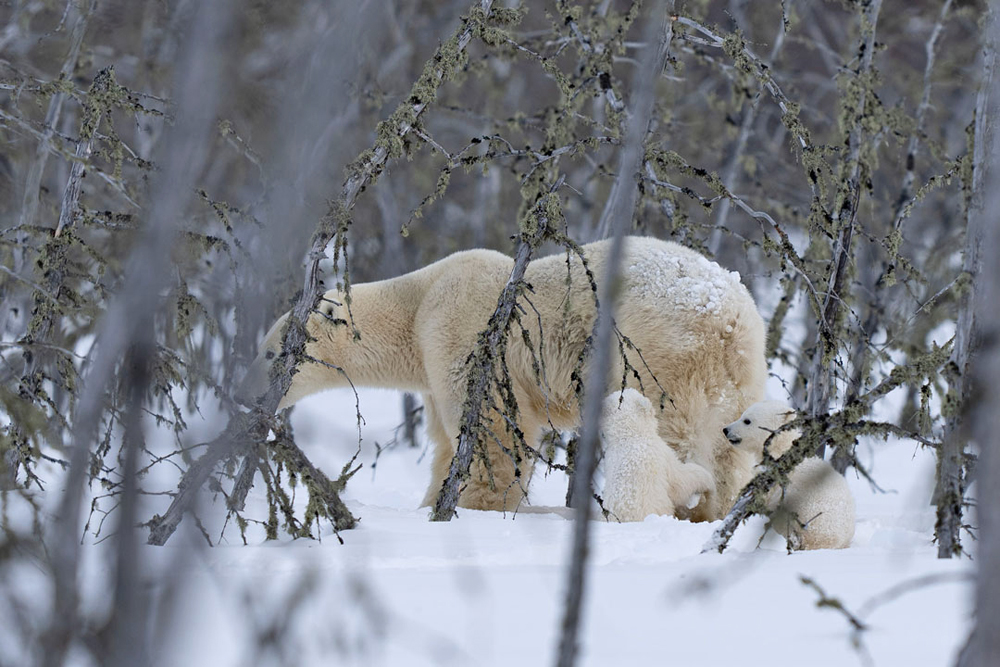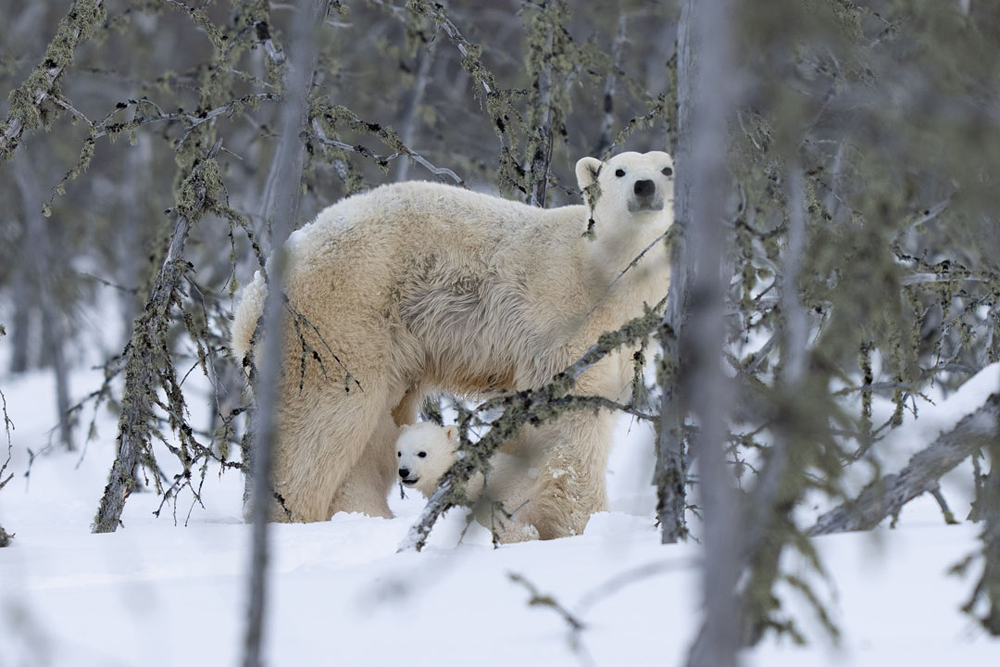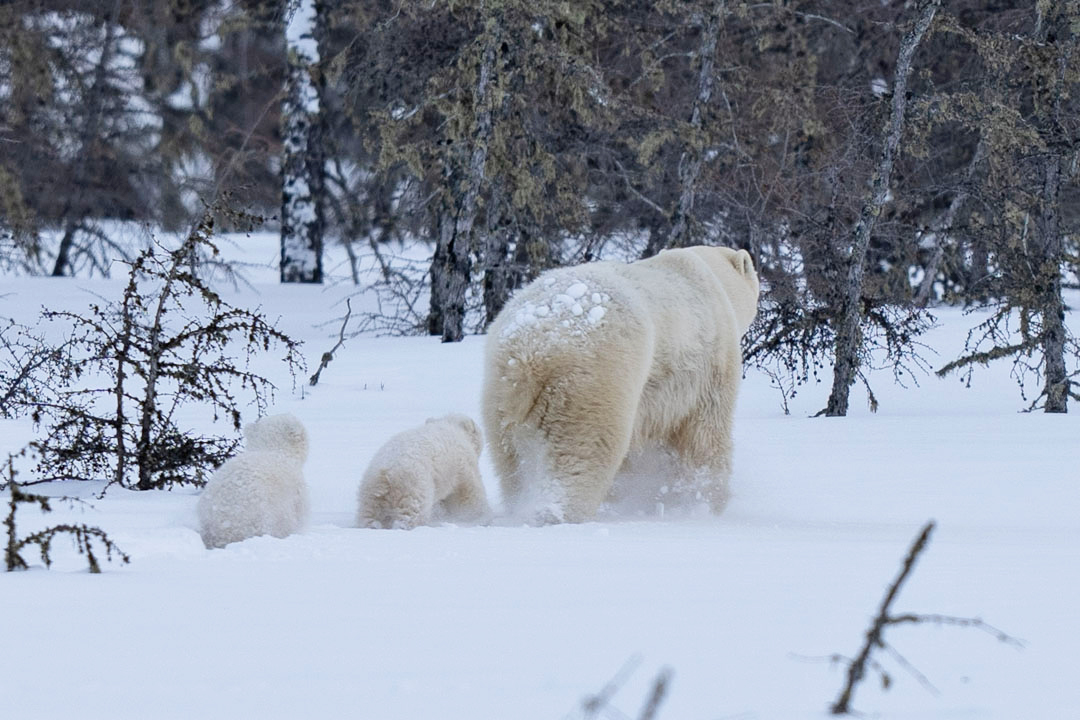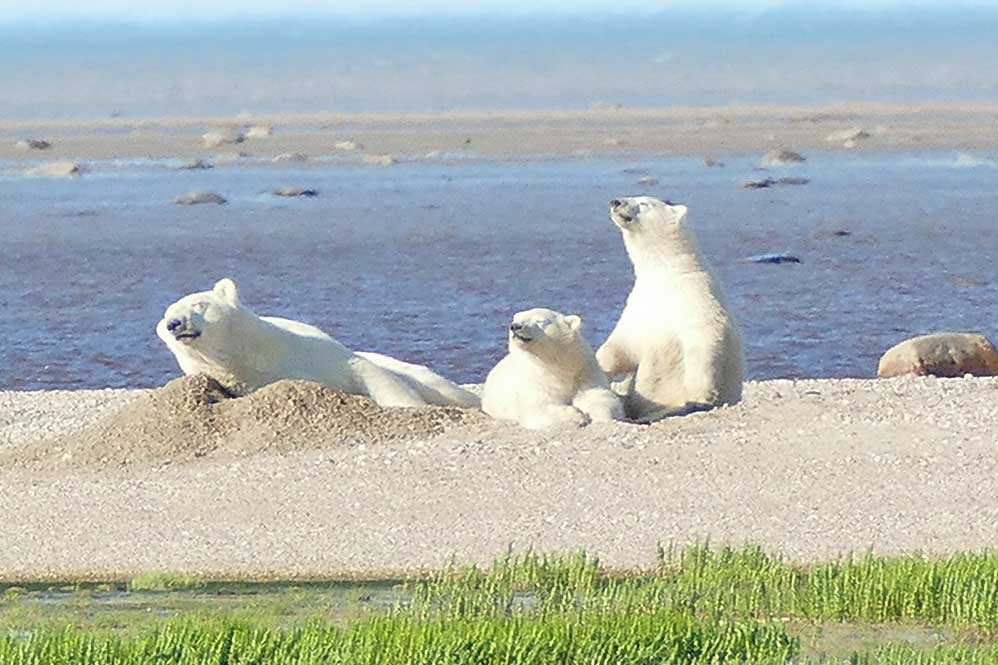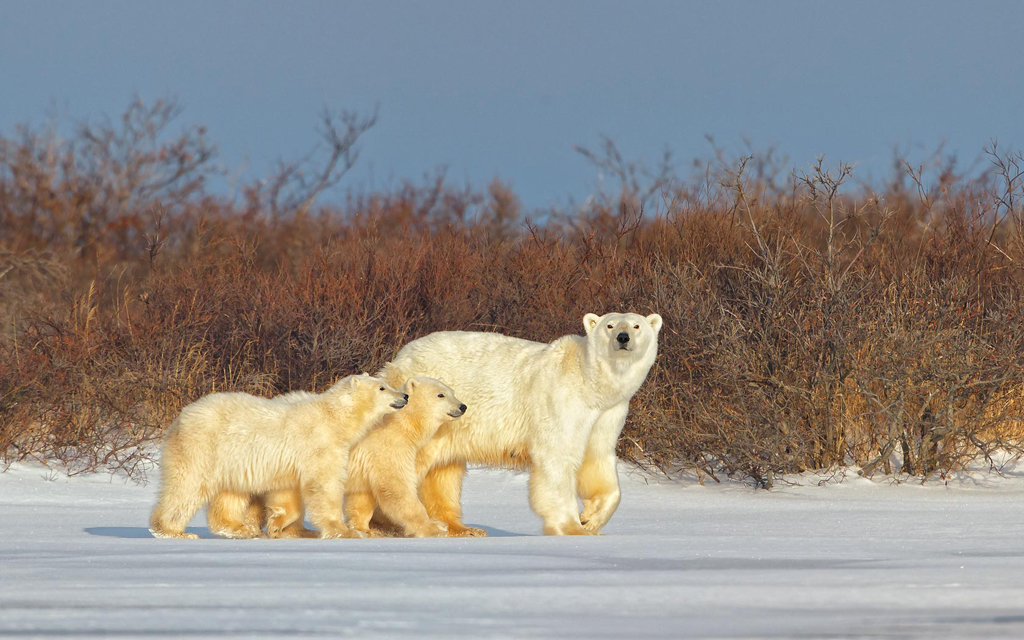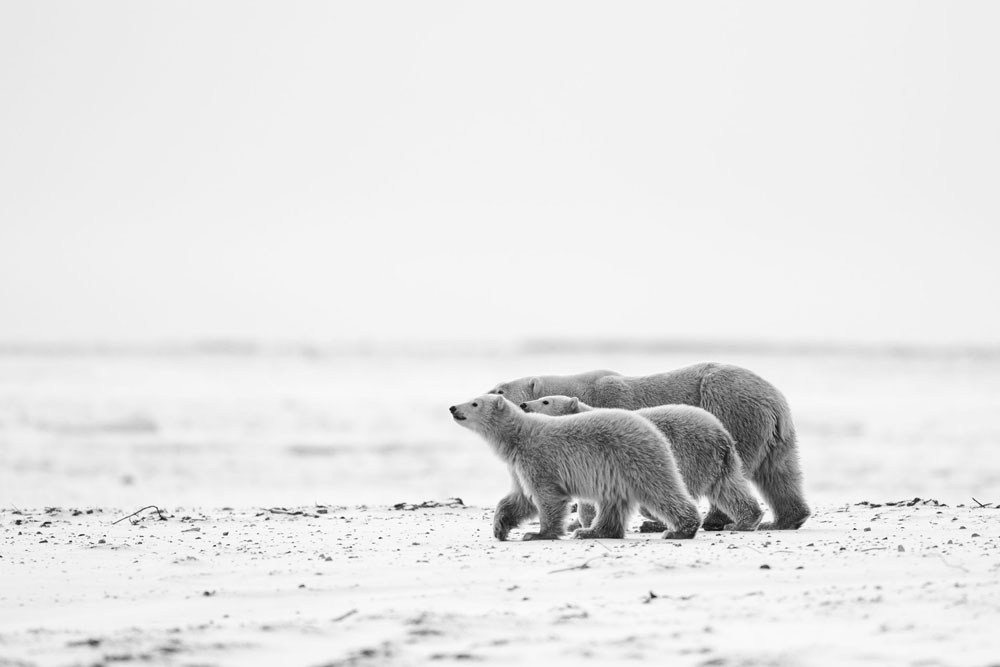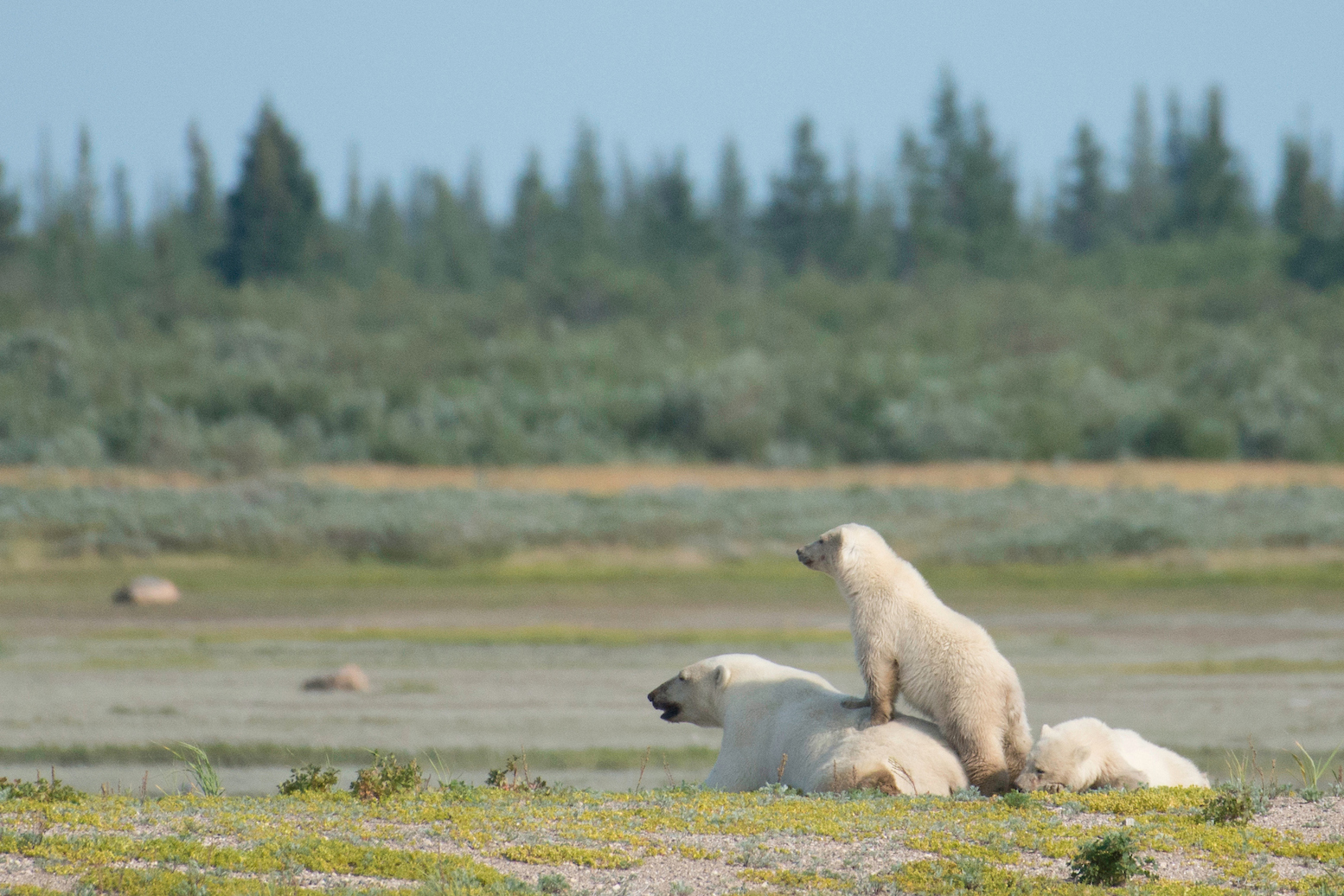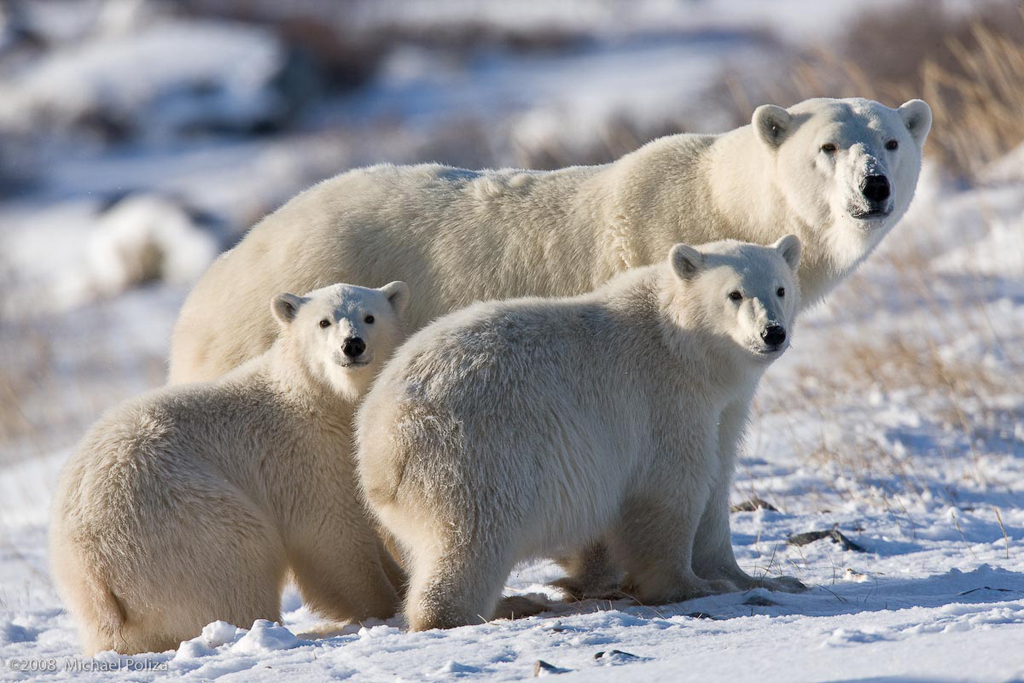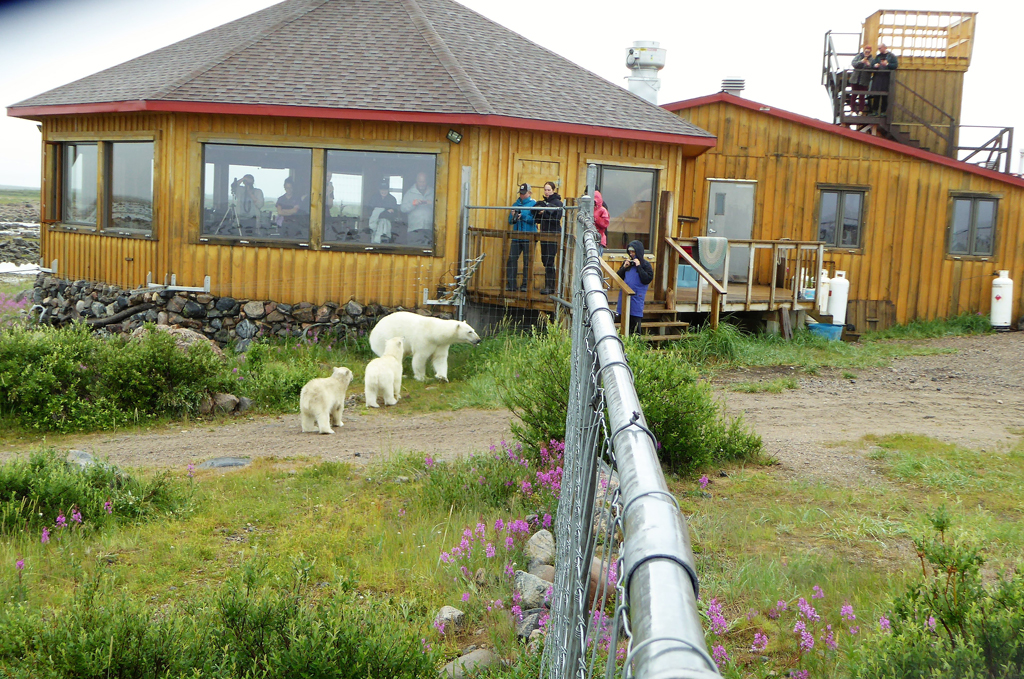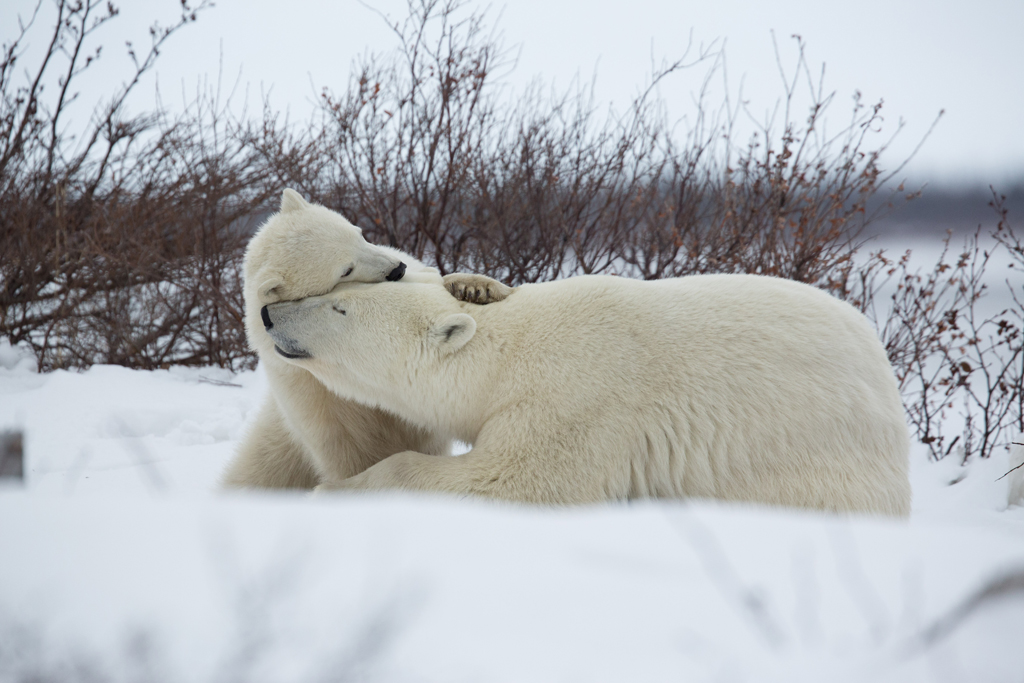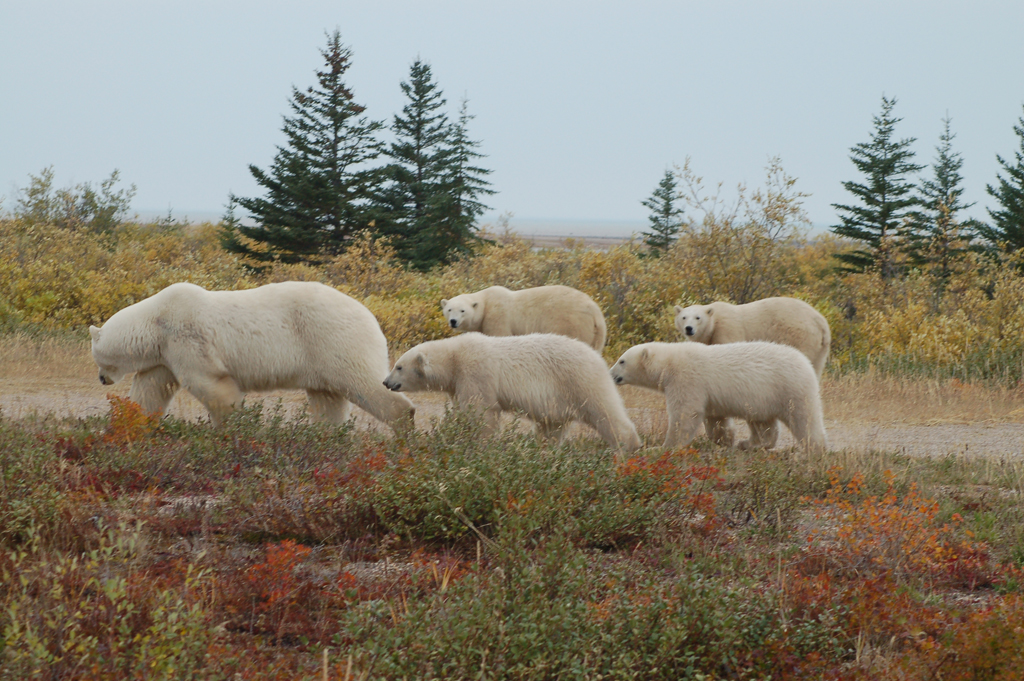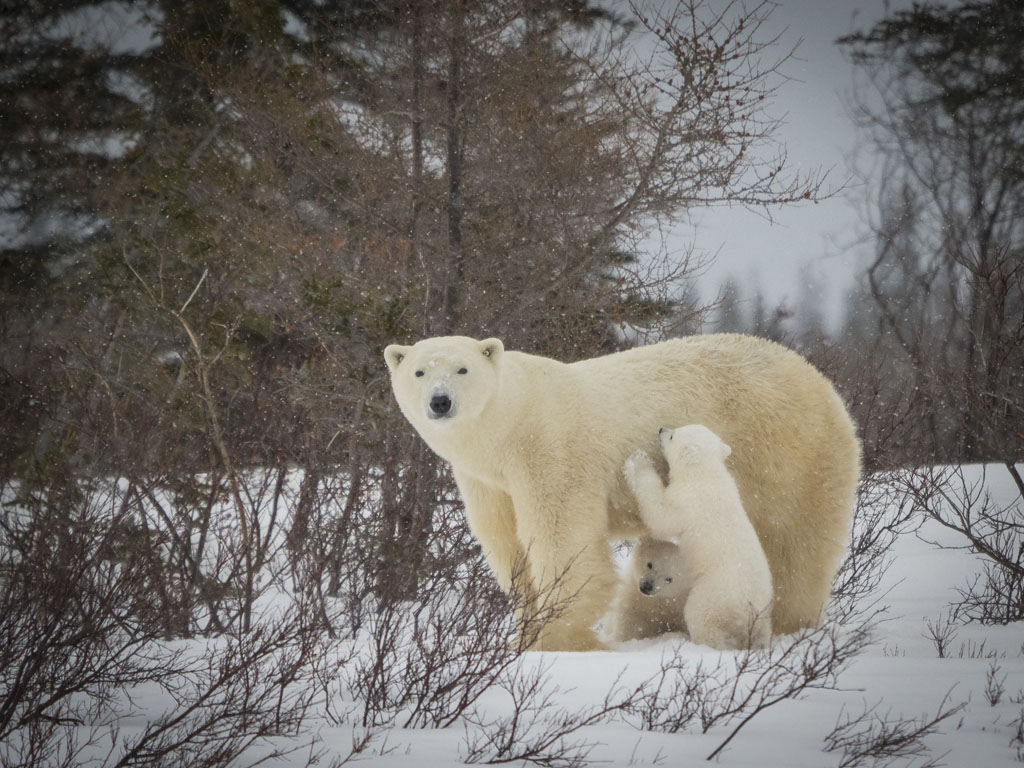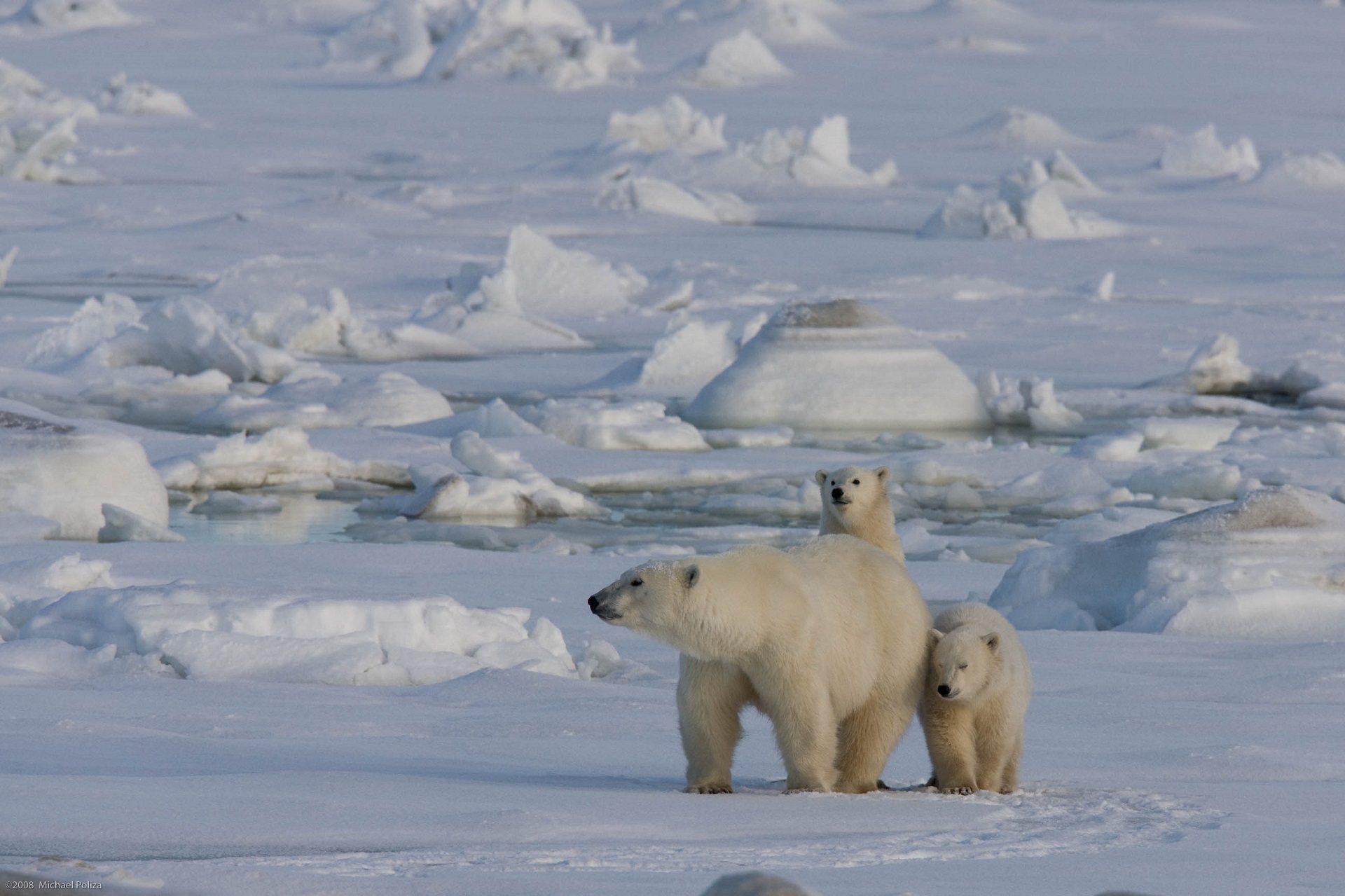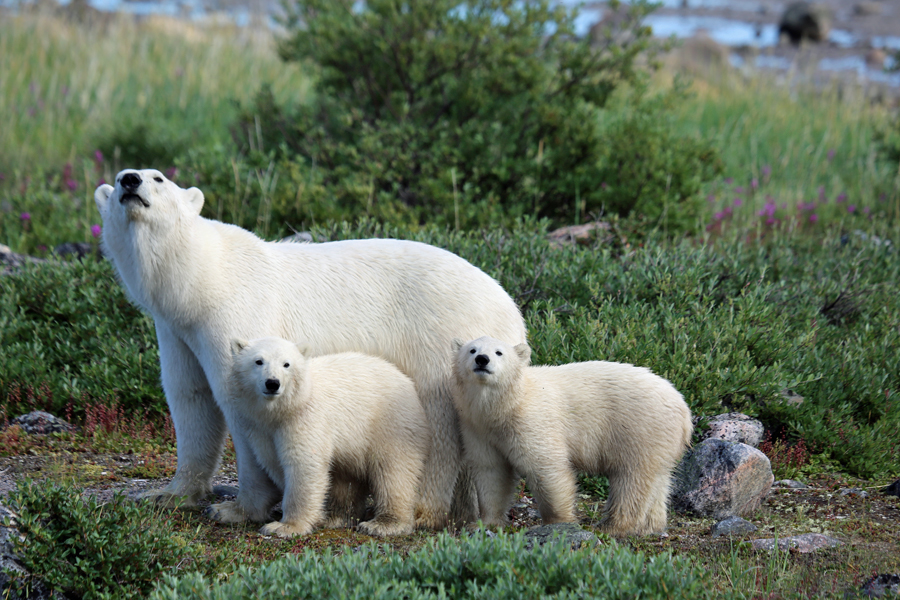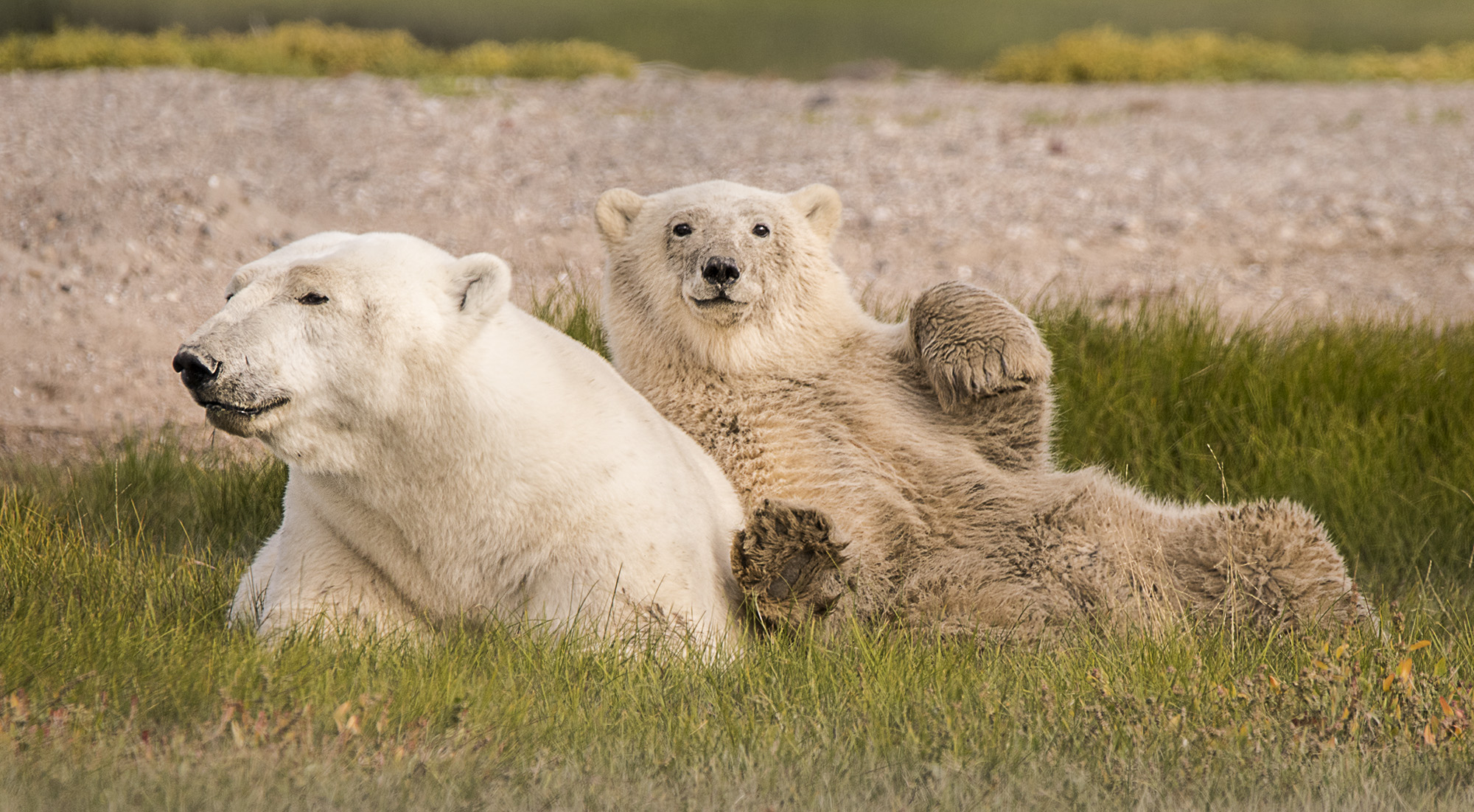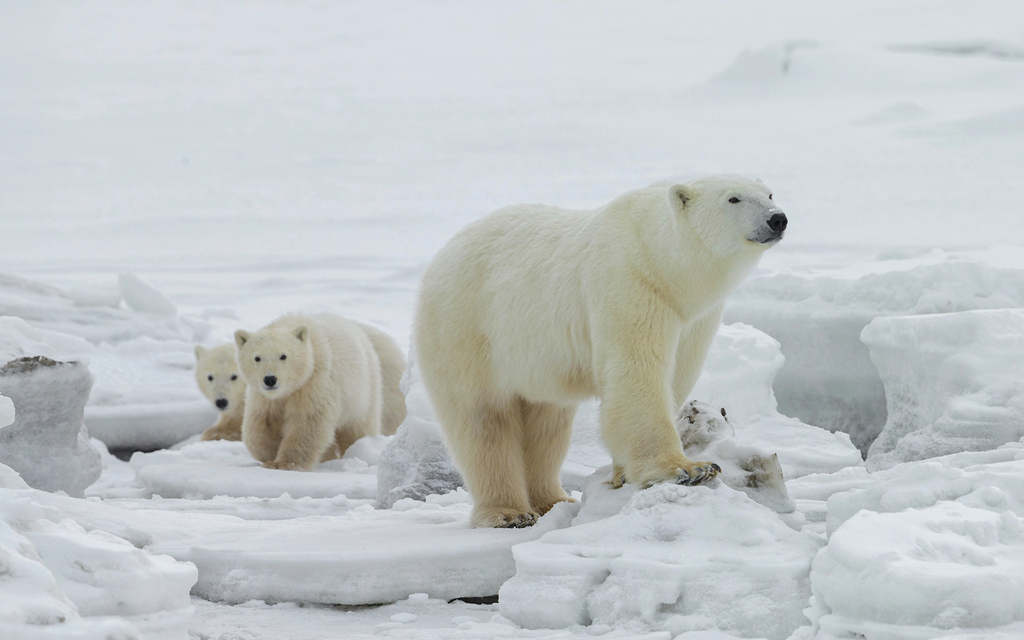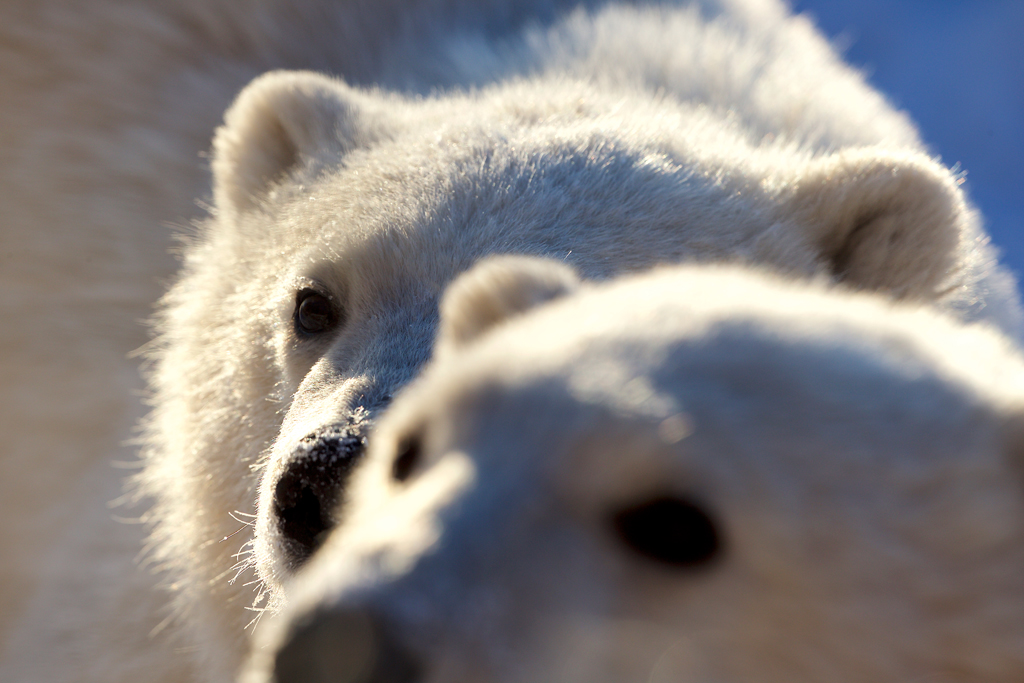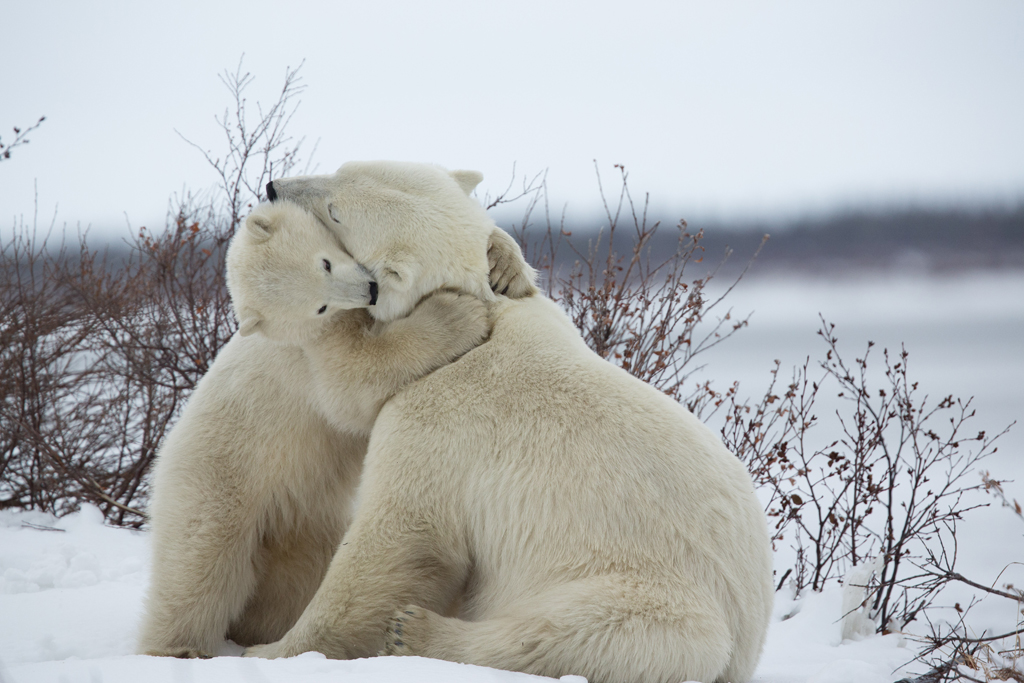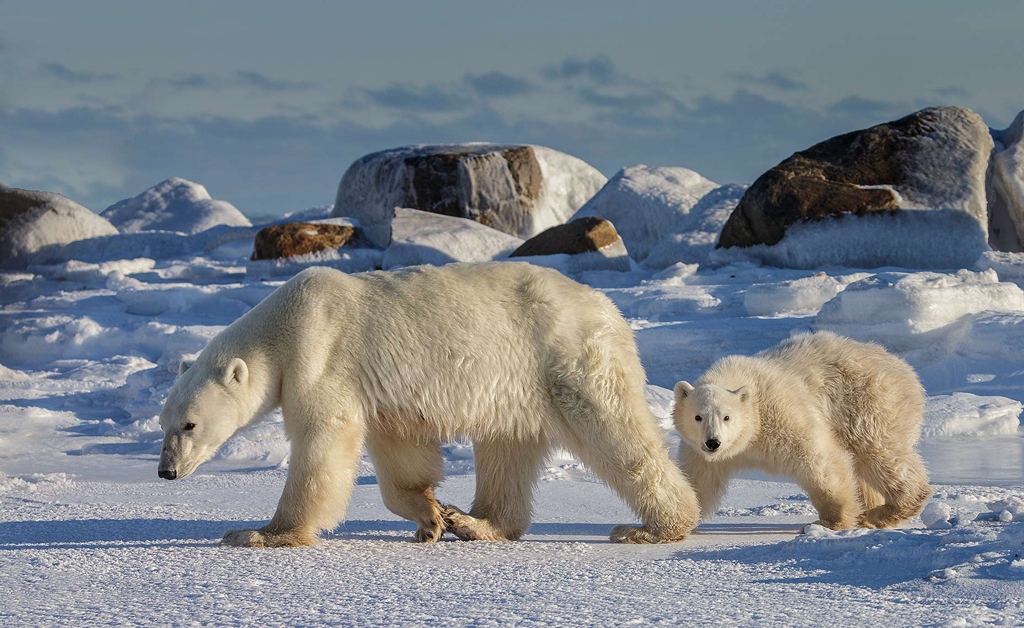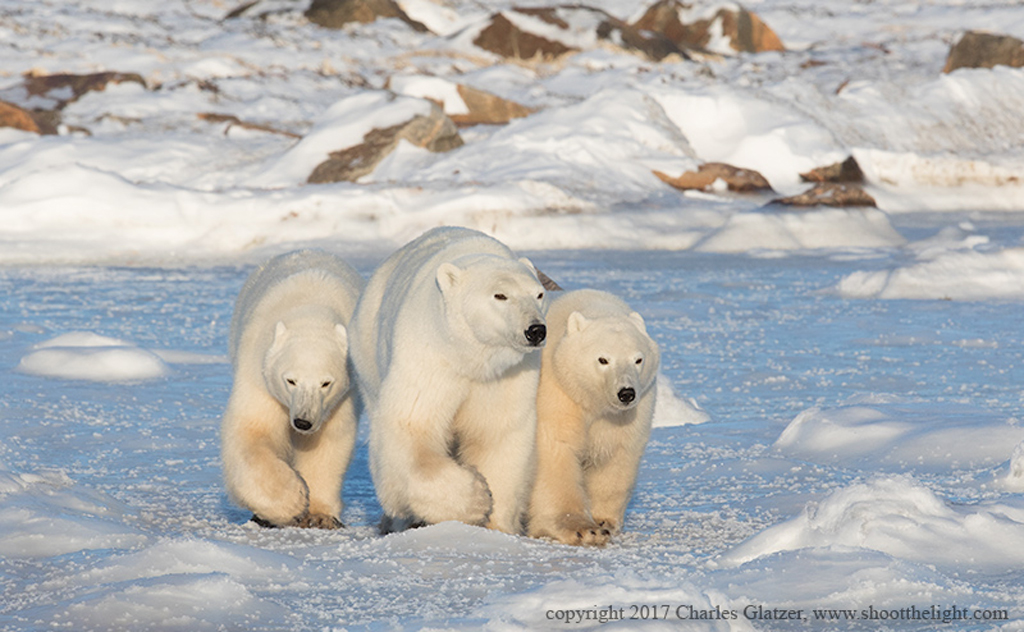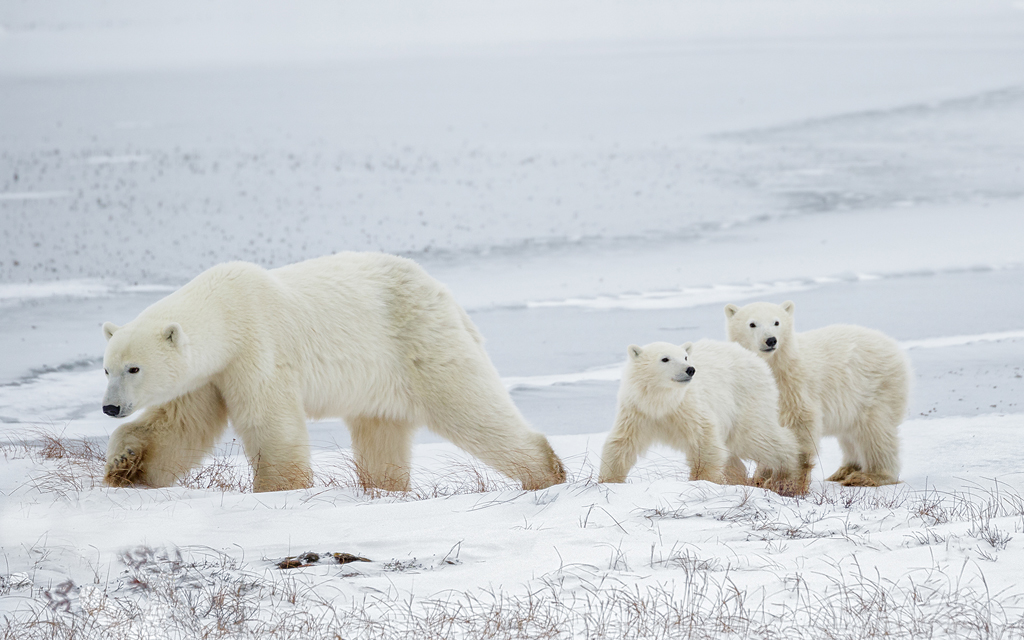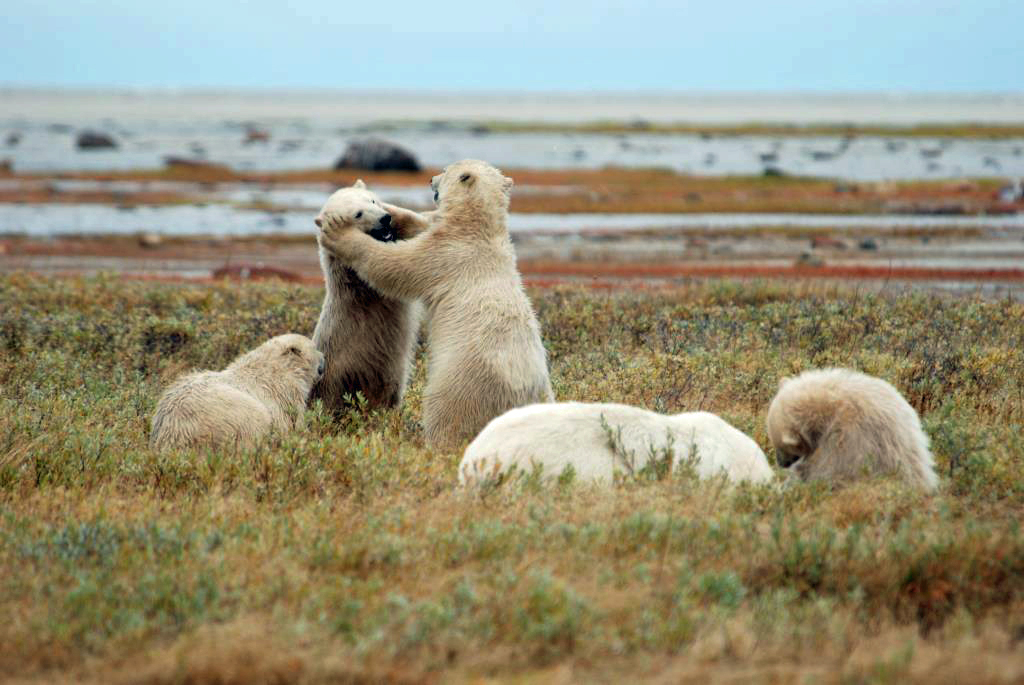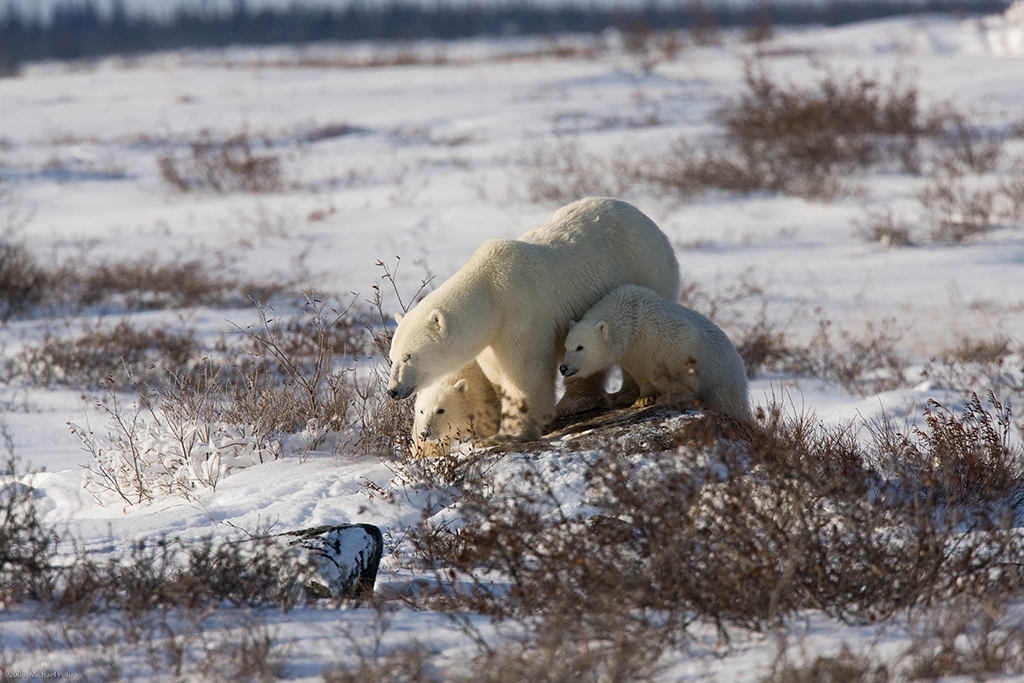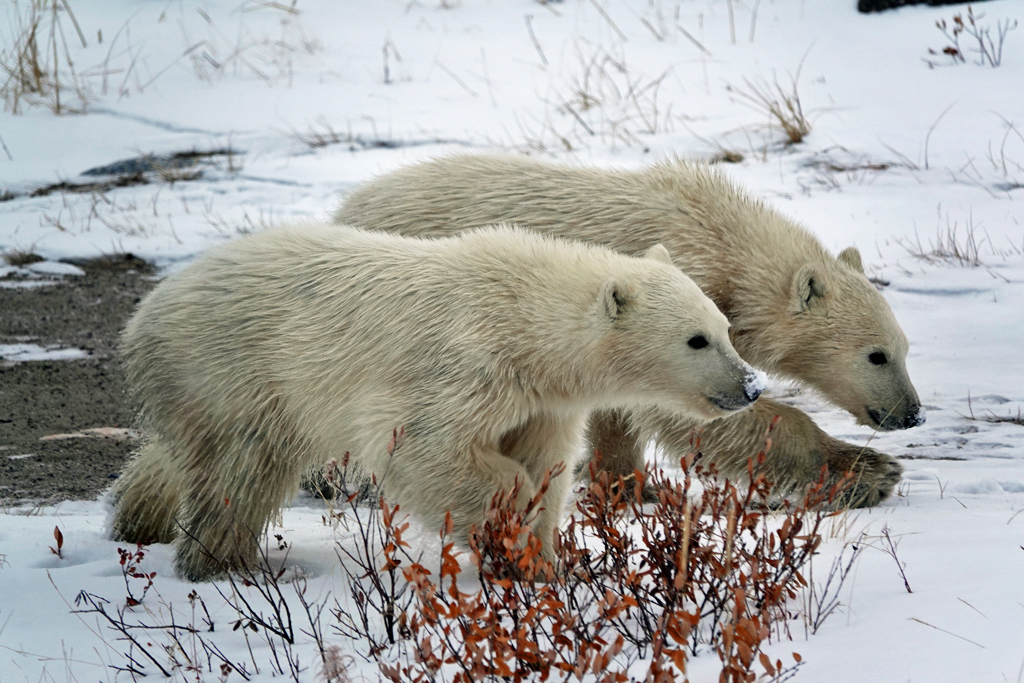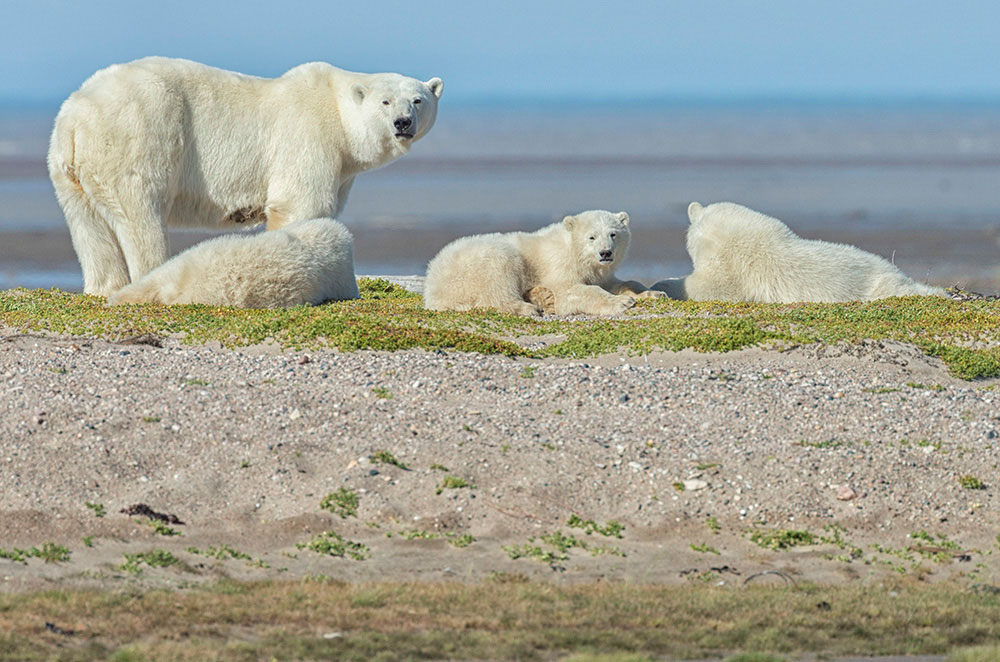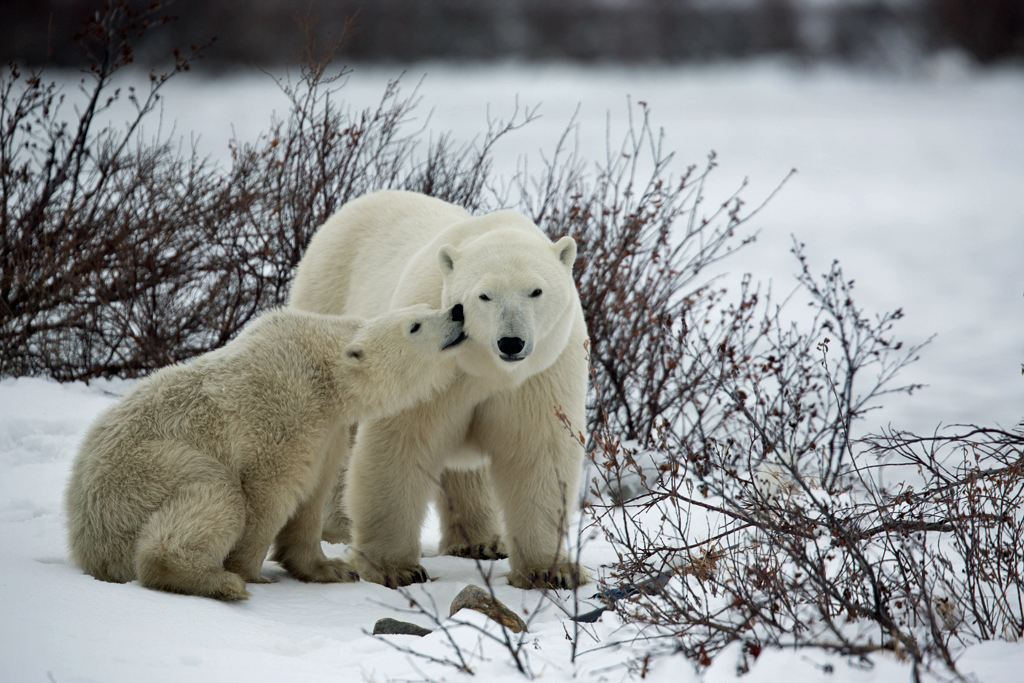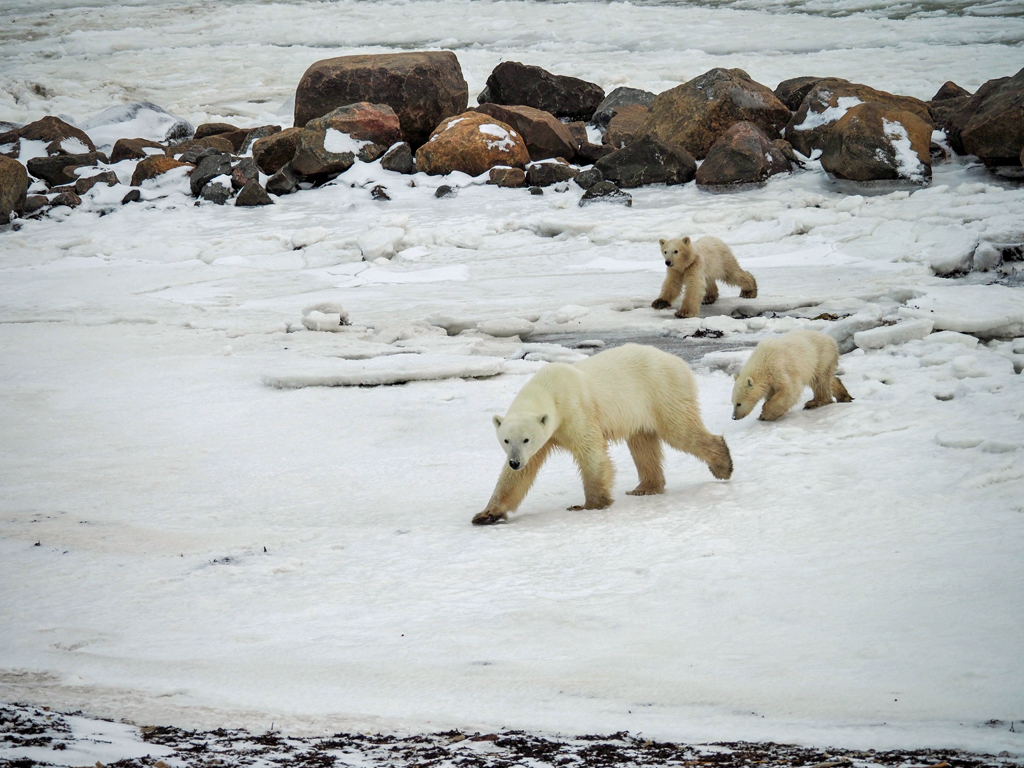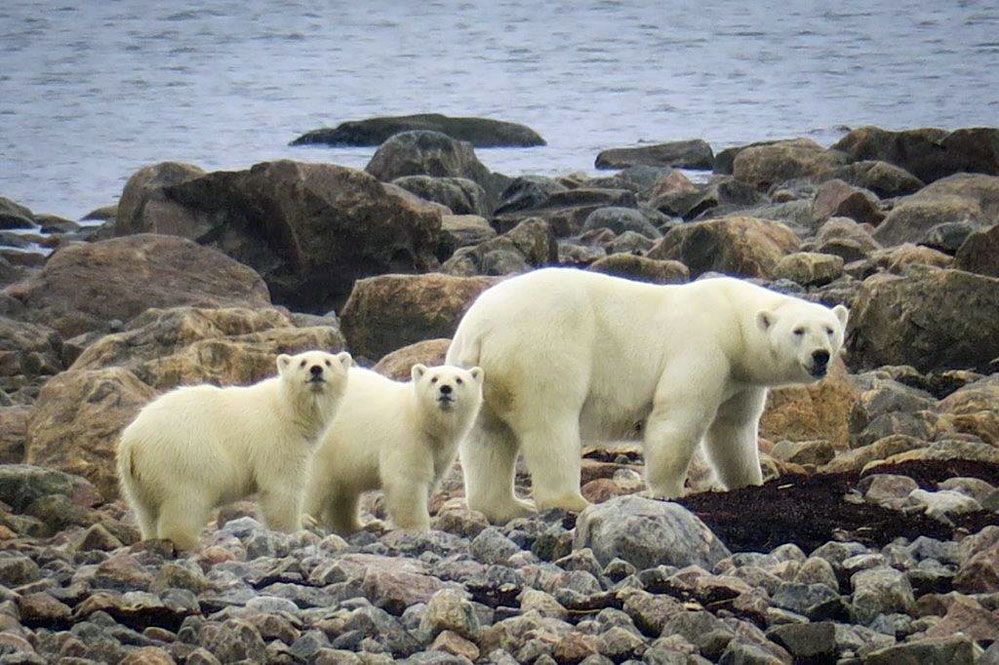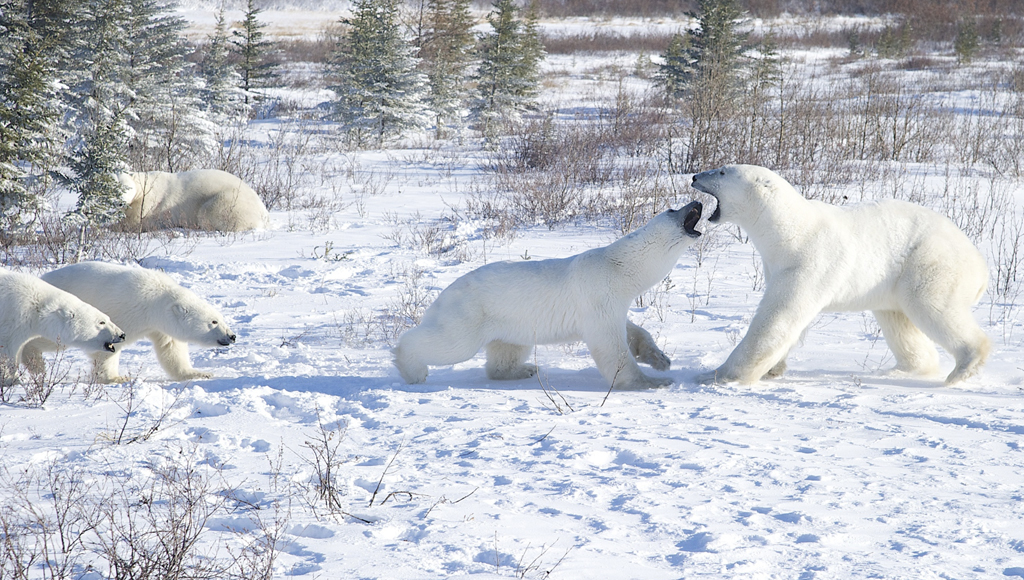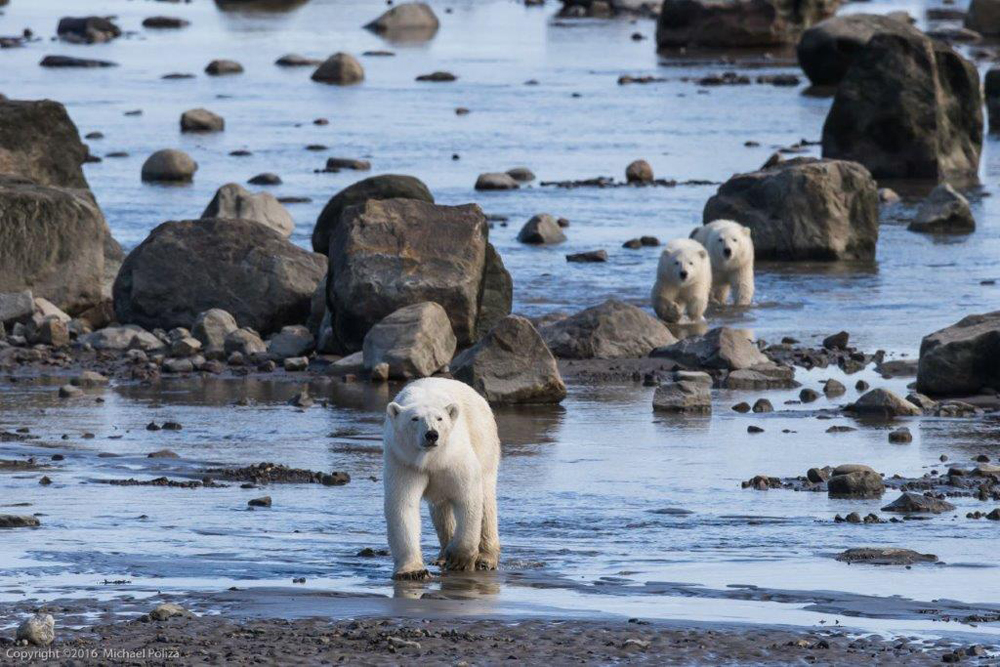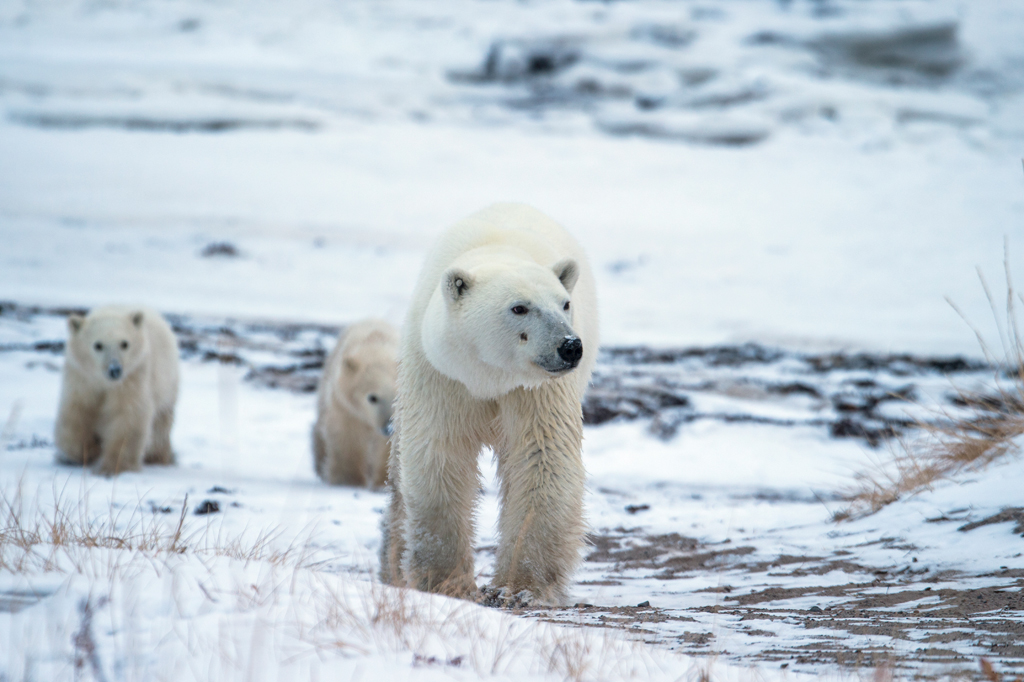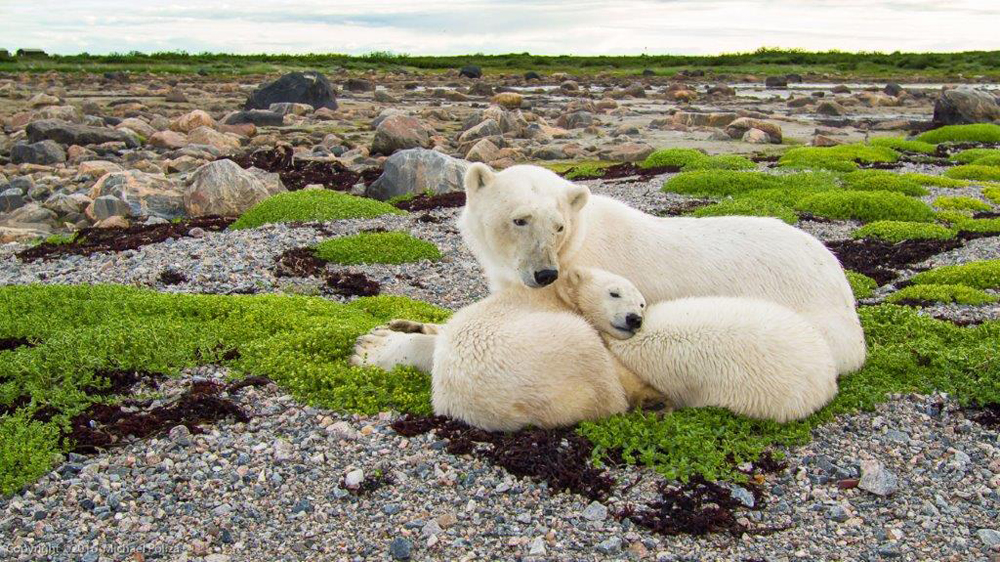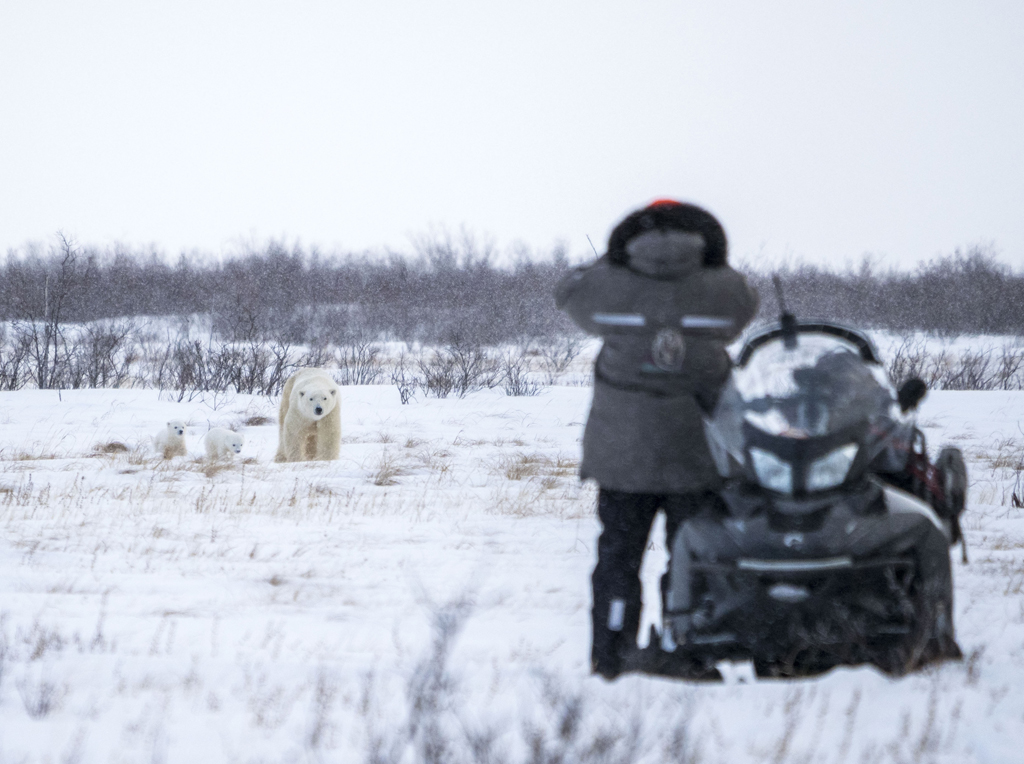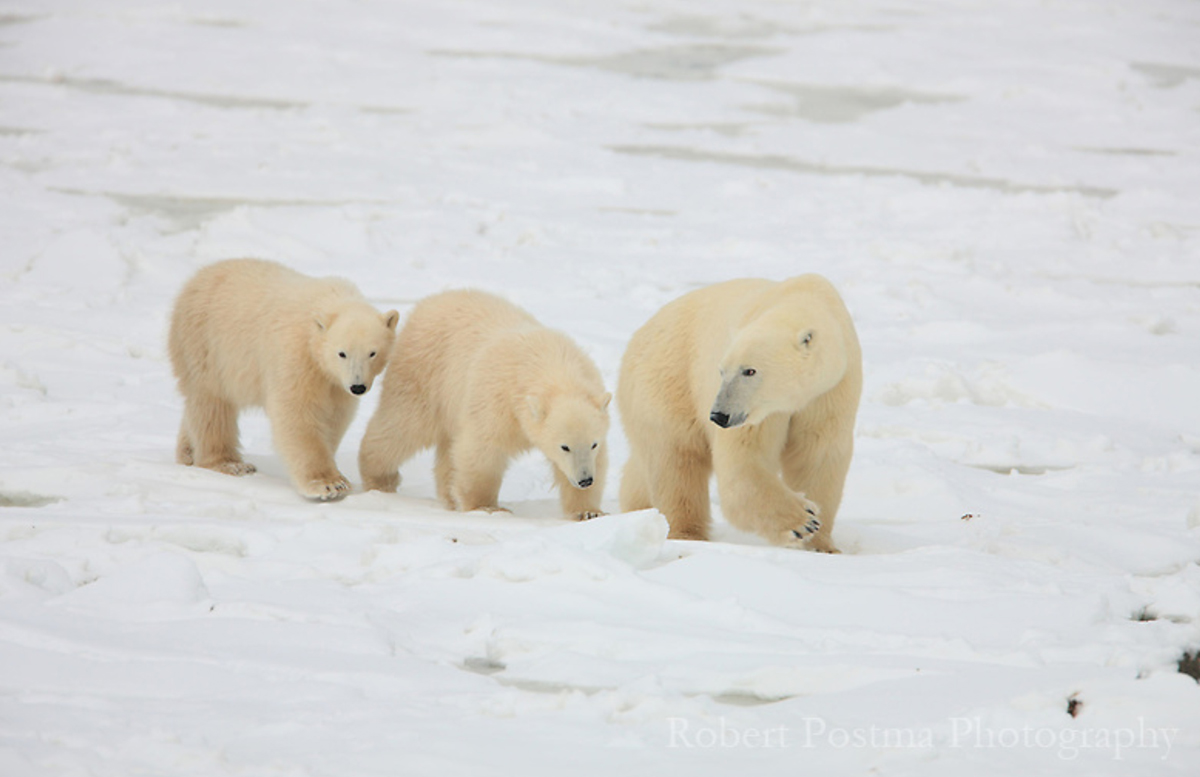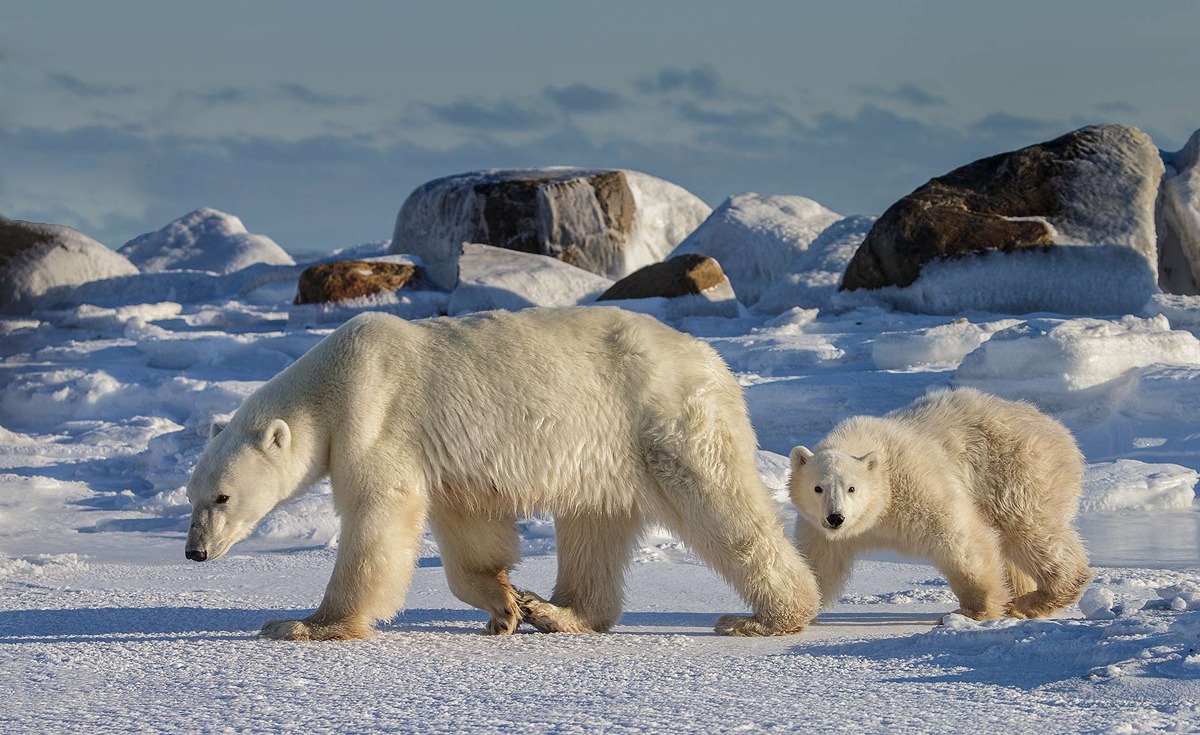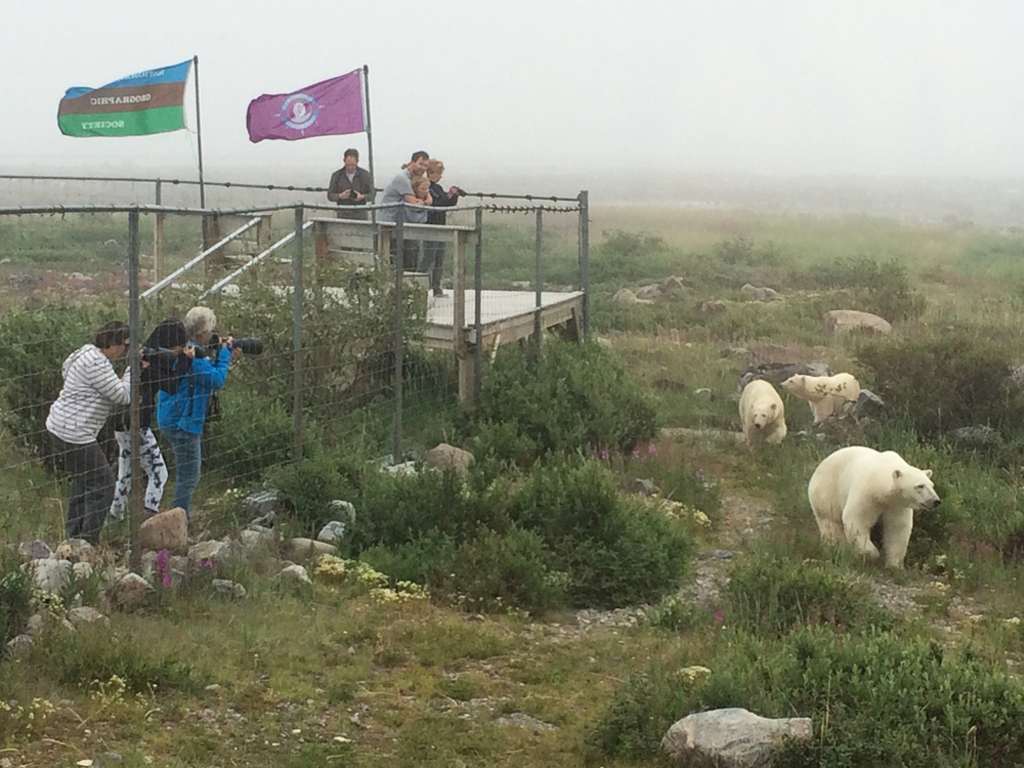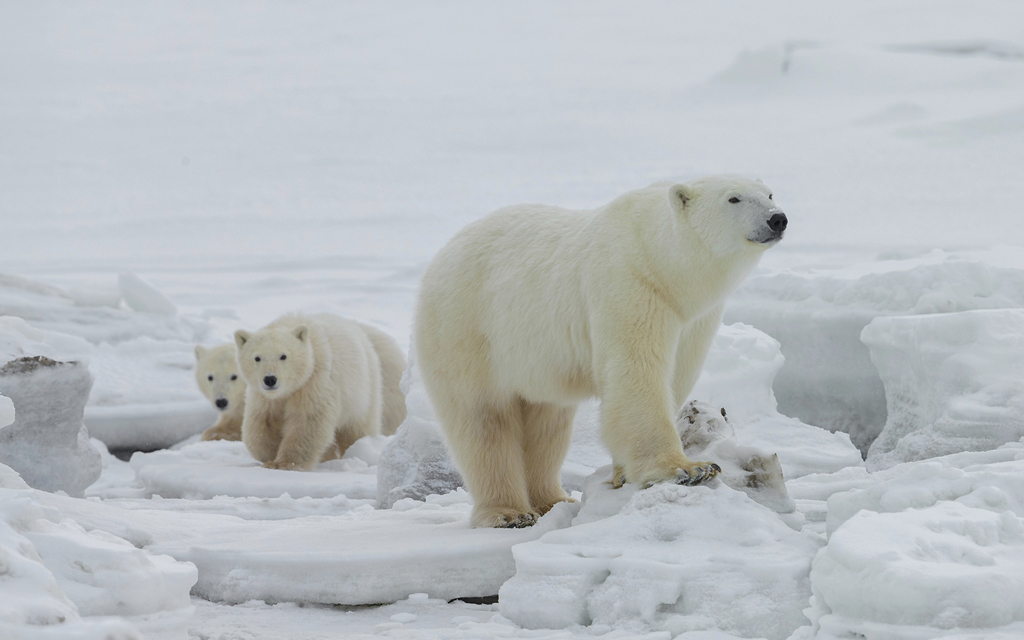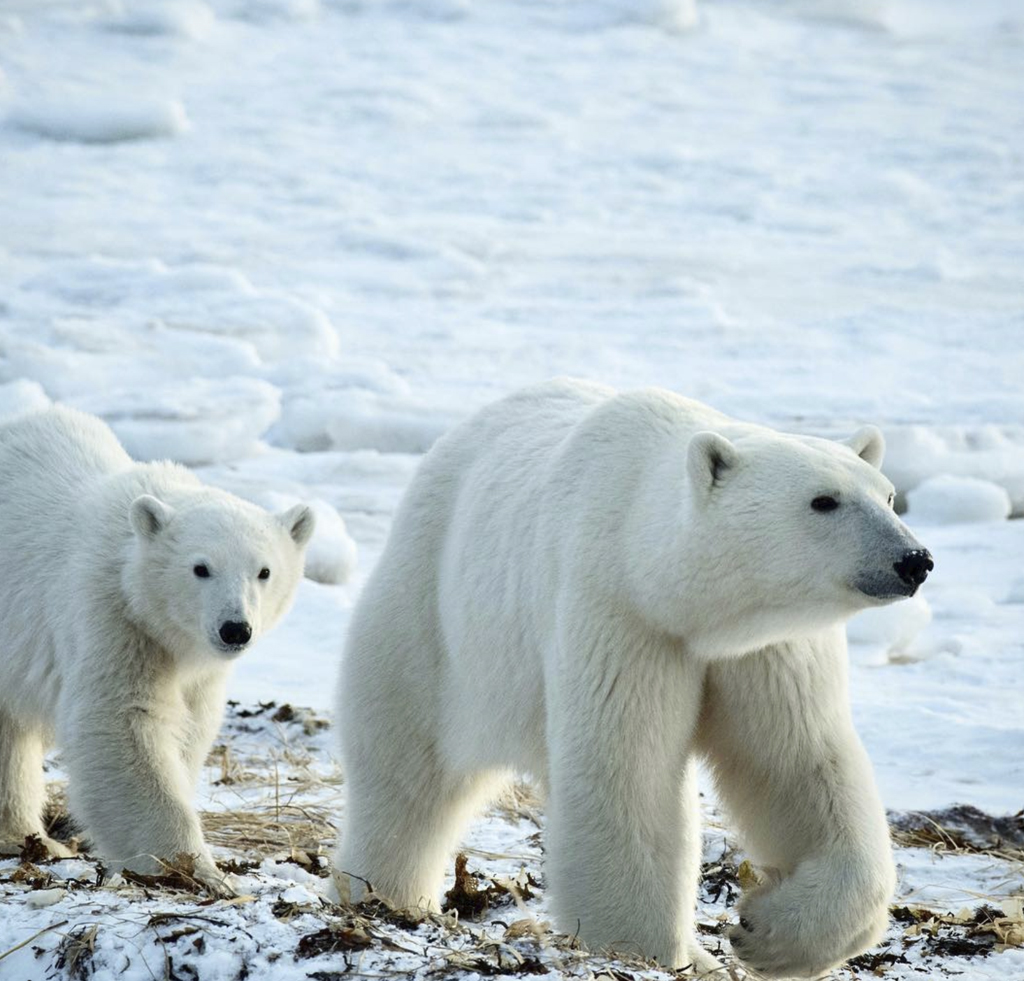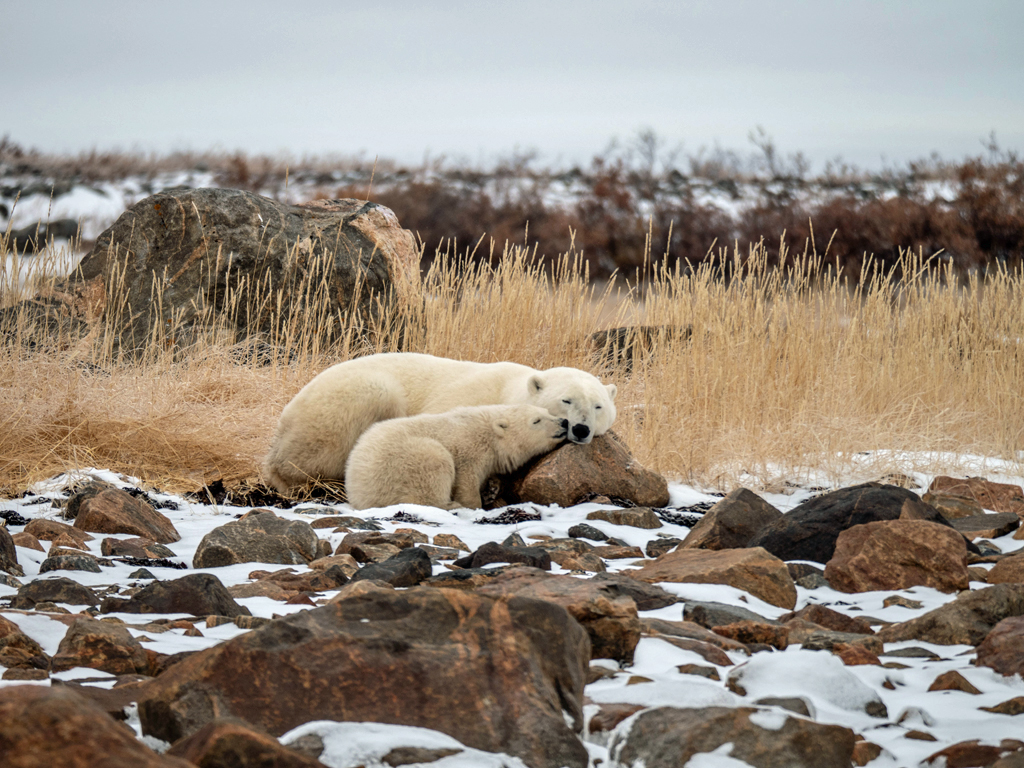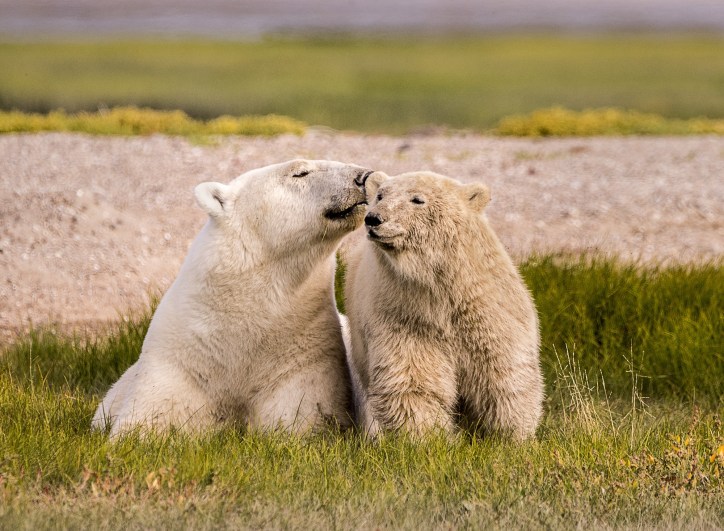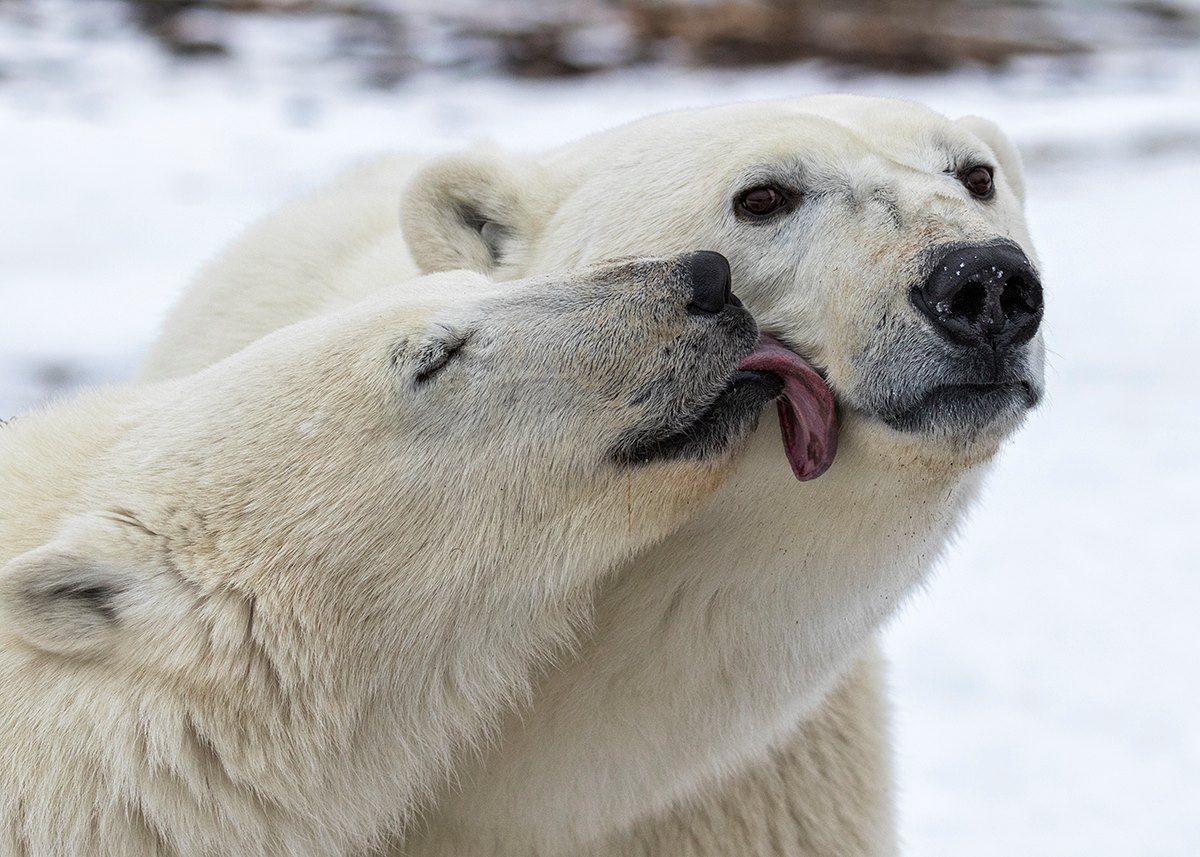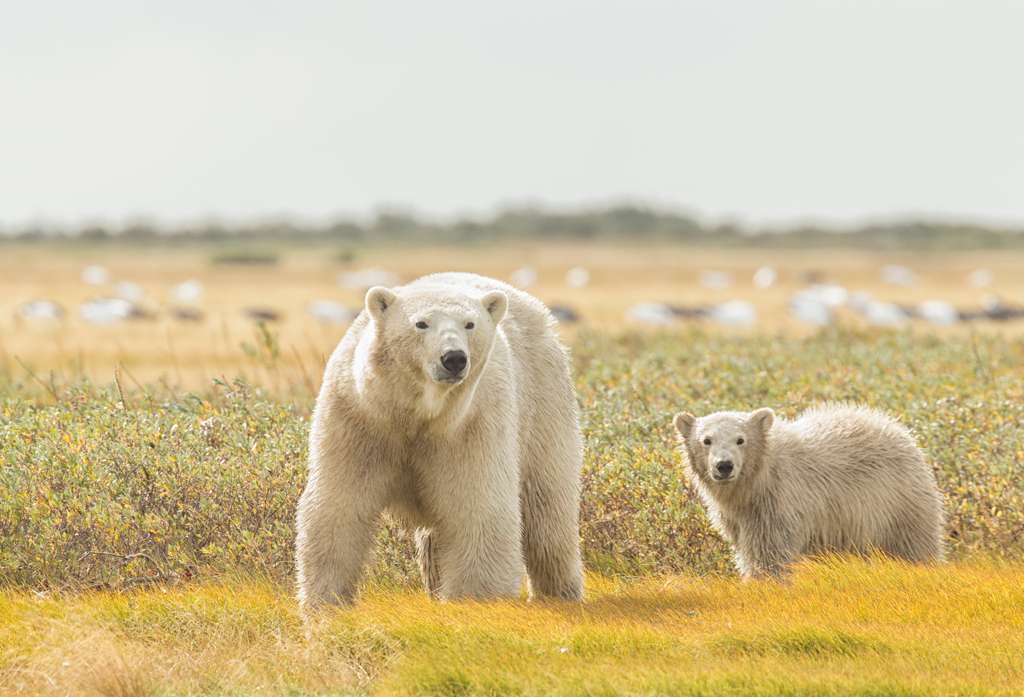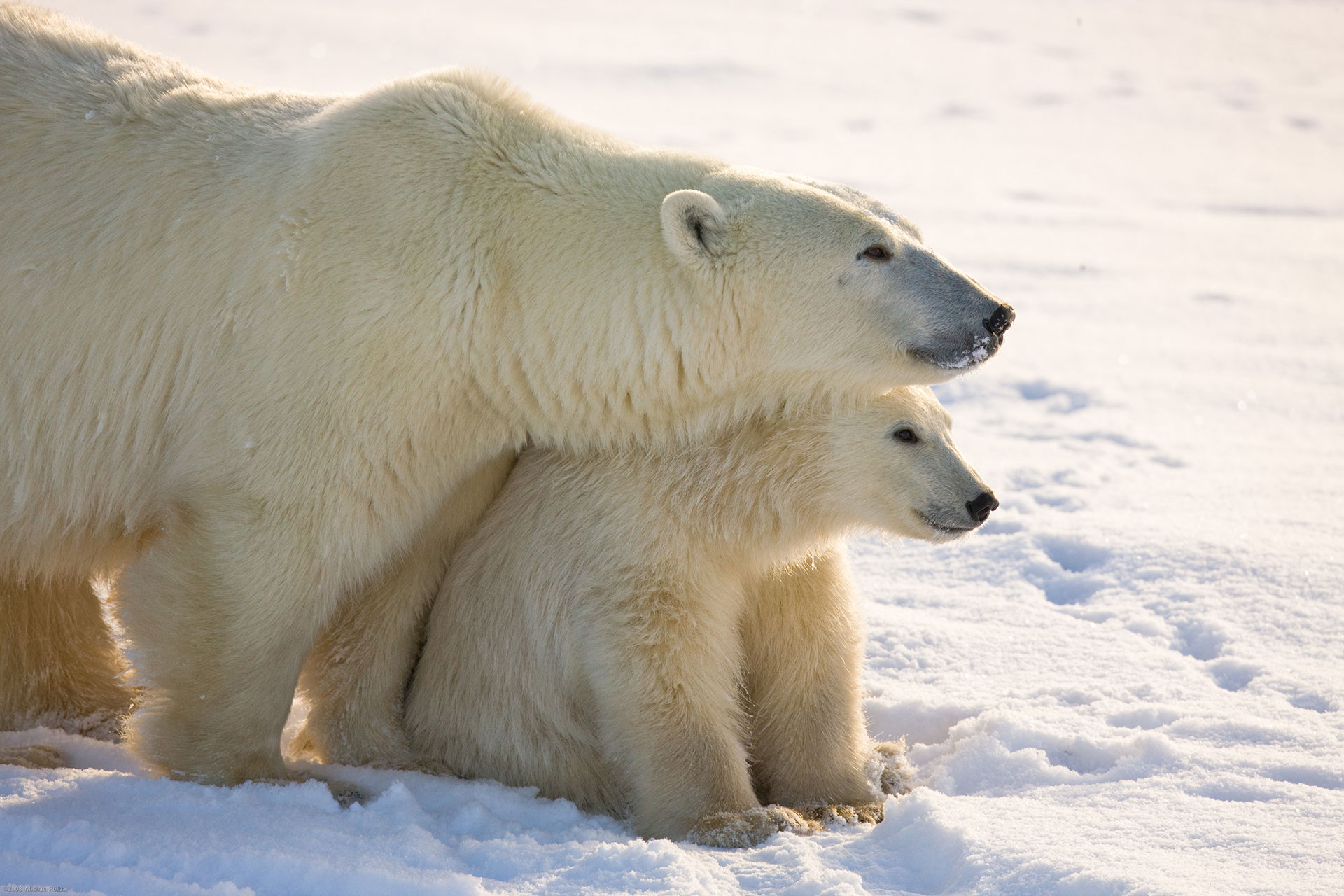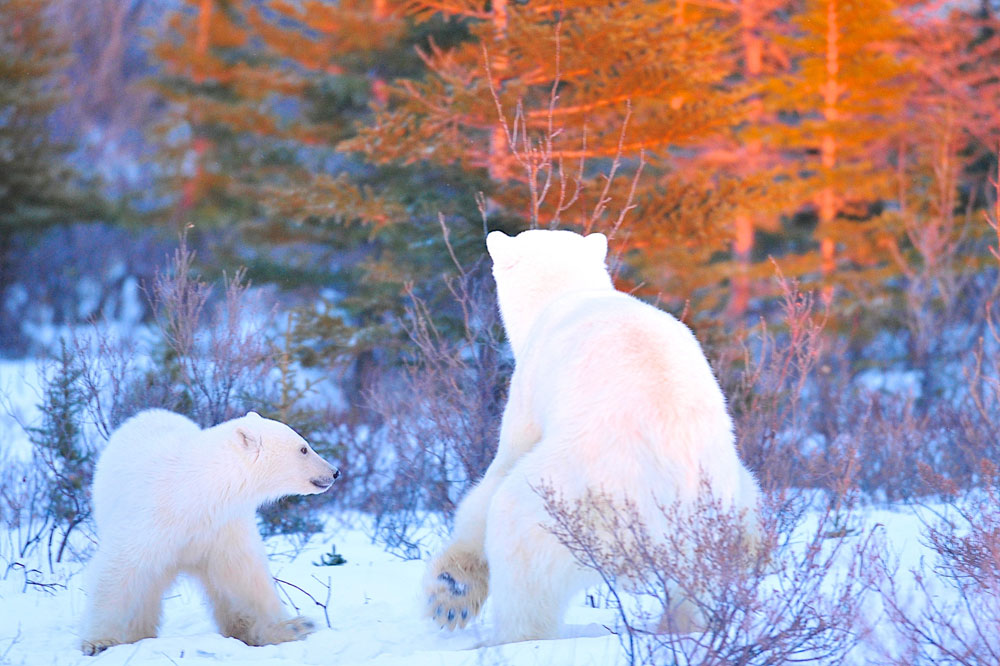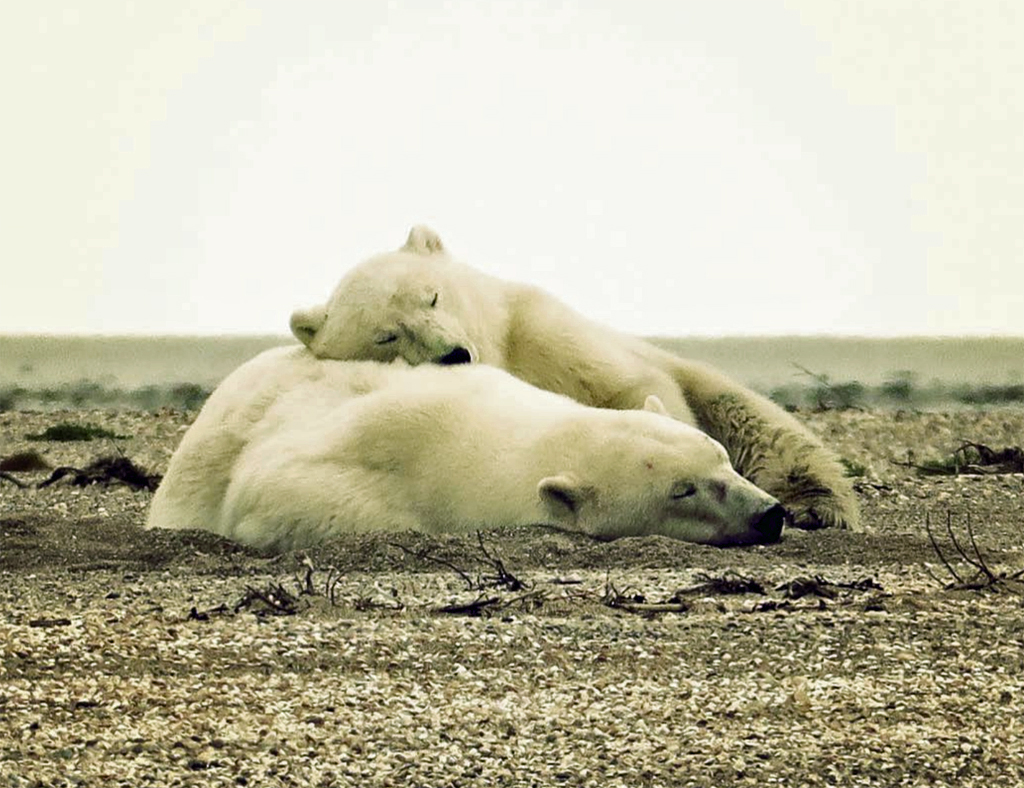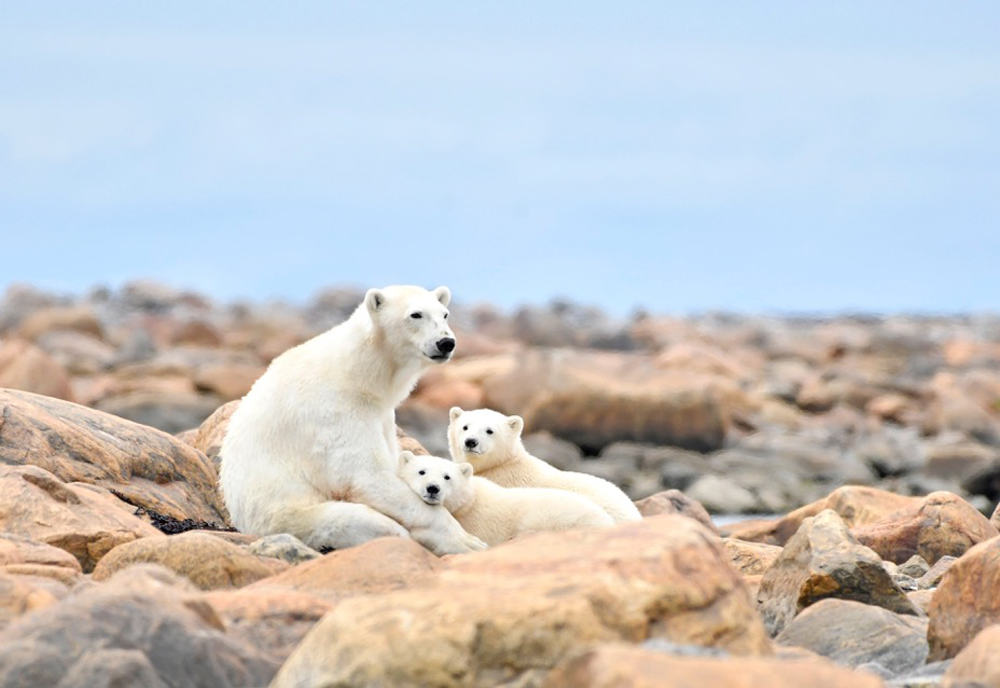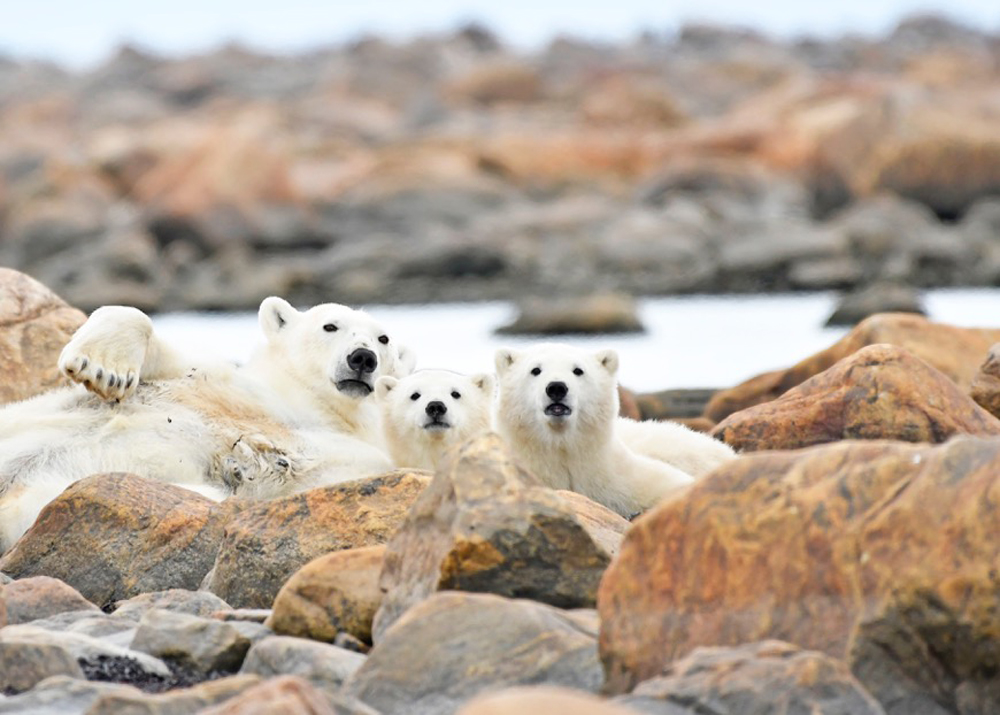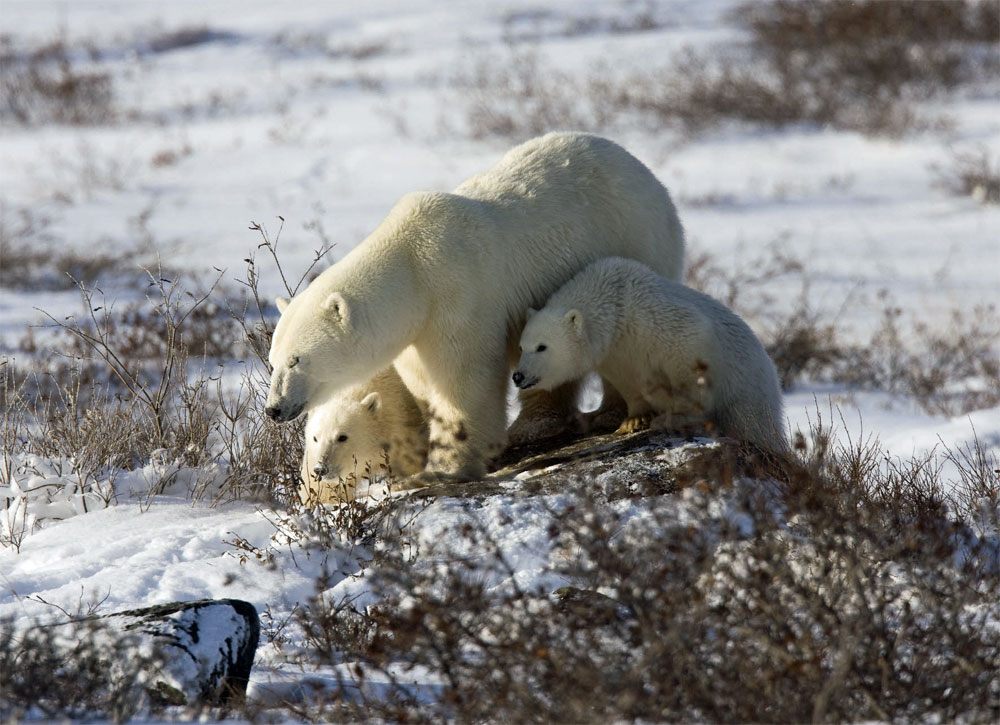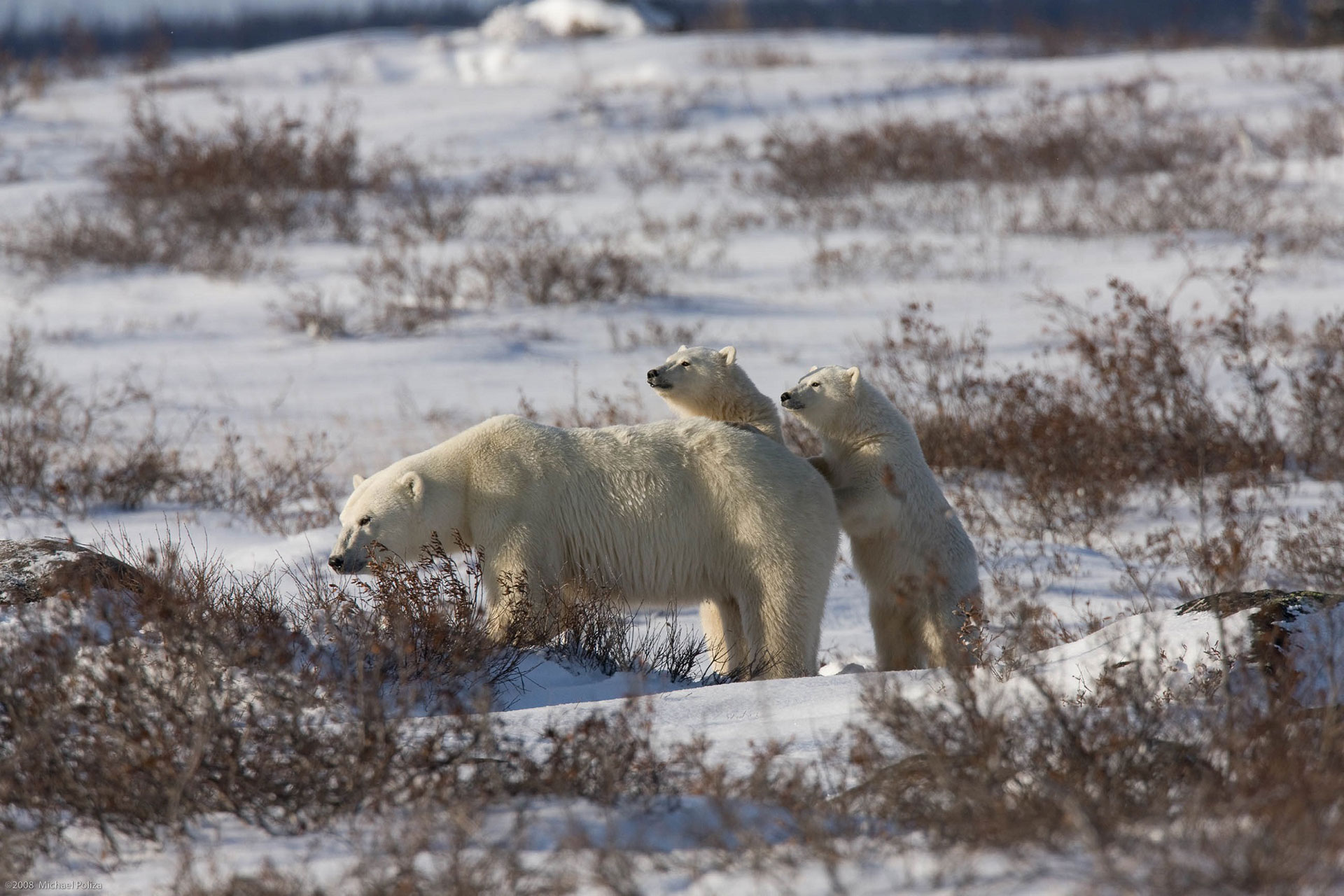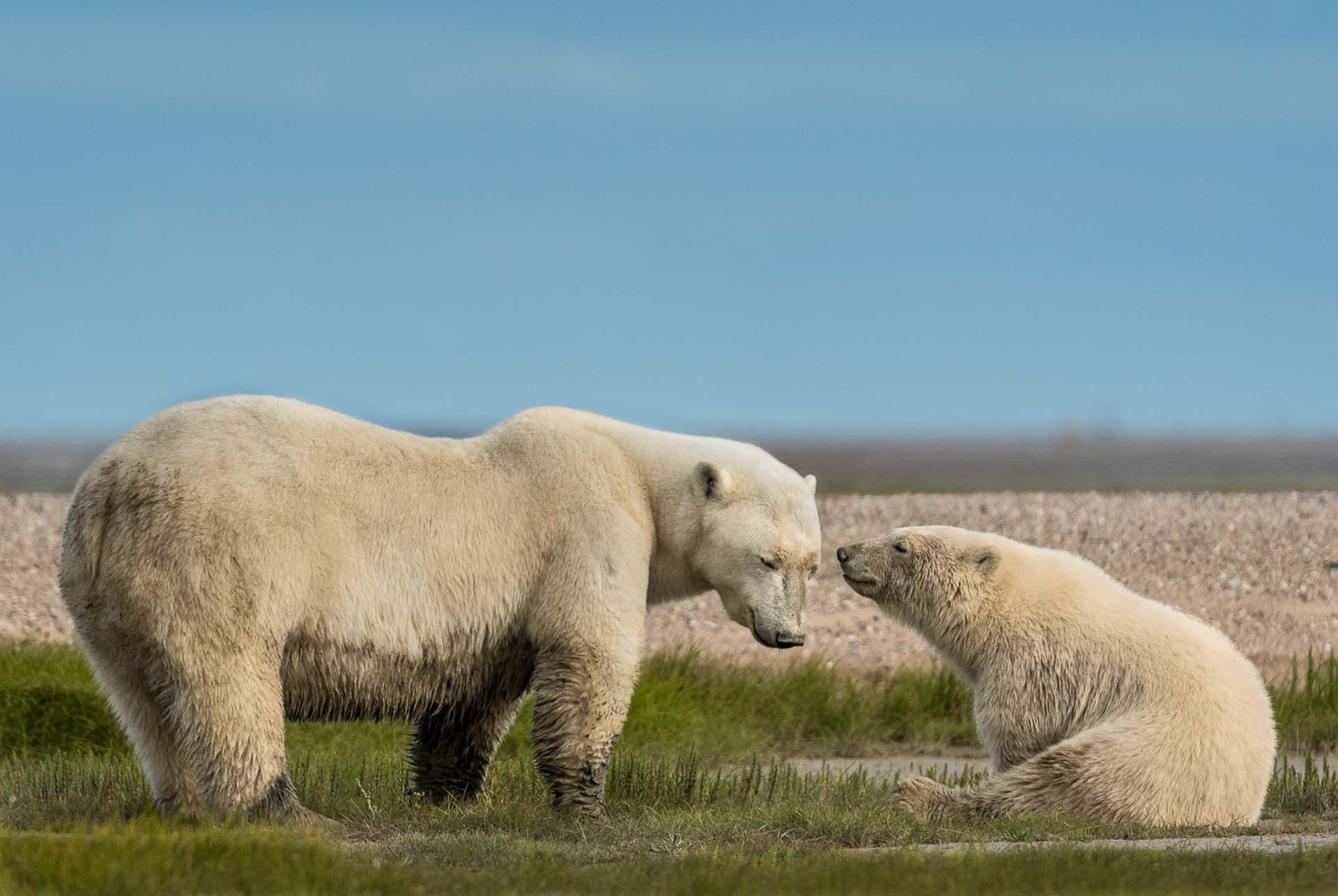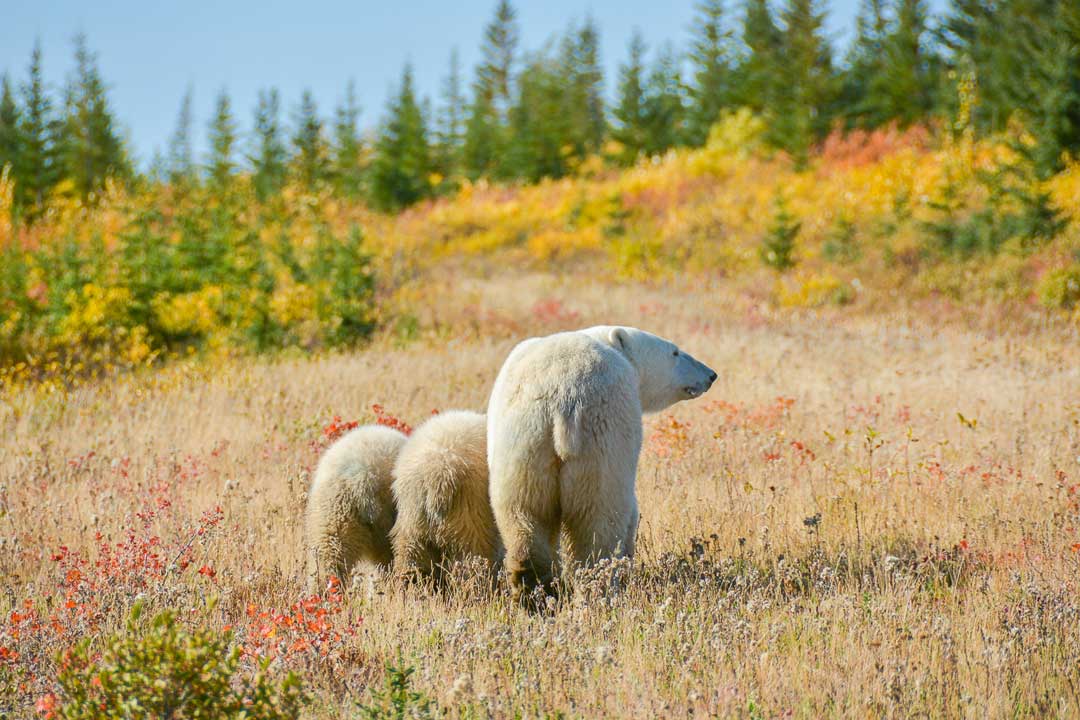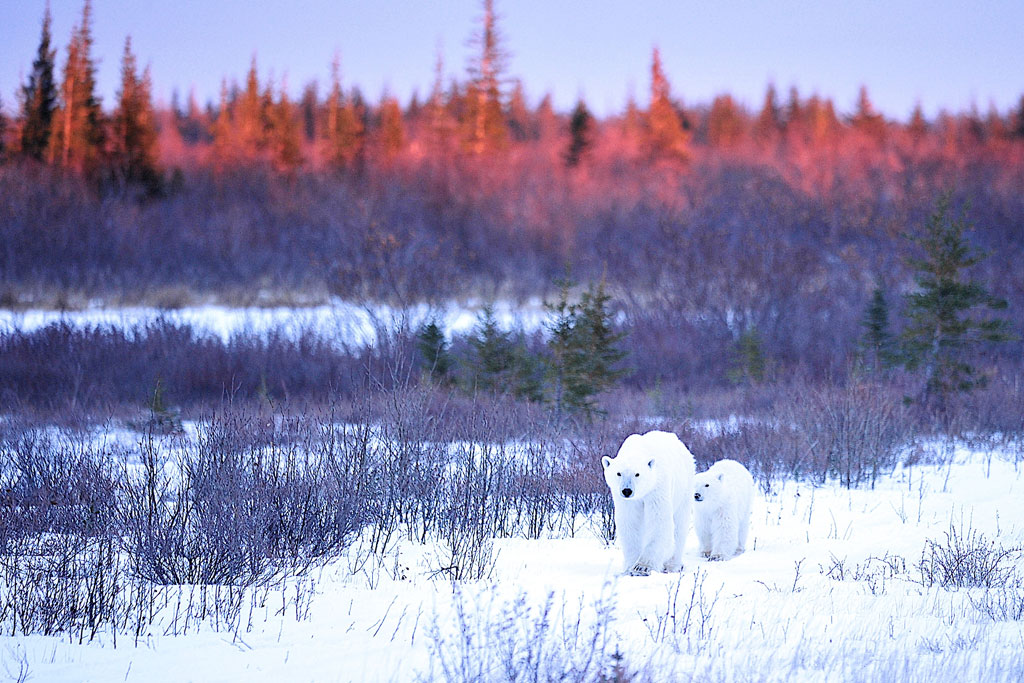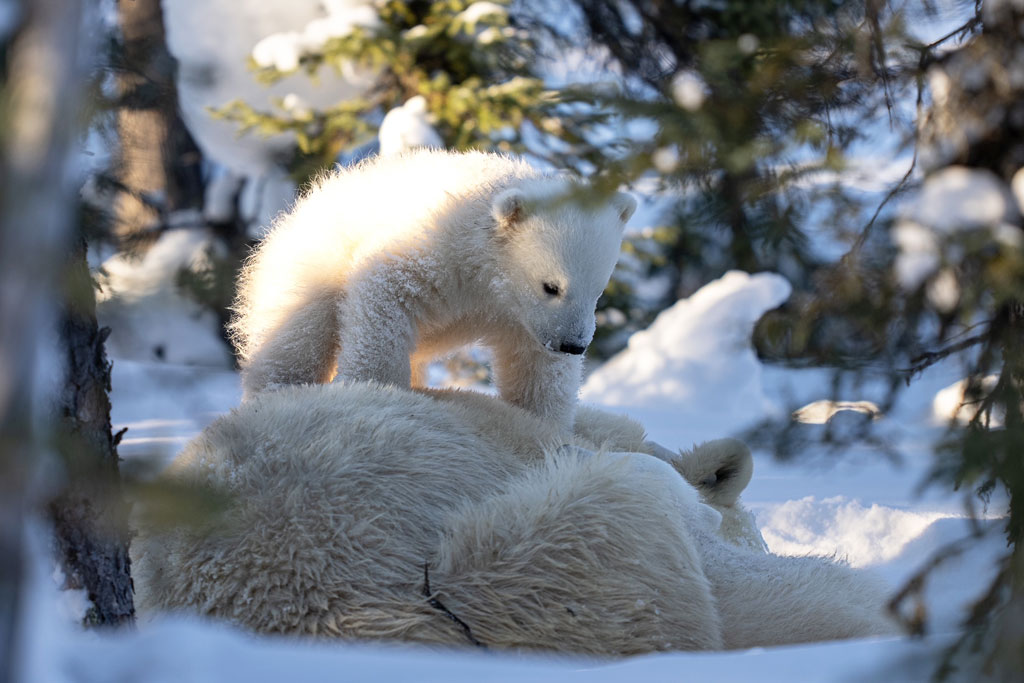Happy Mother’s Day from our Churchill Wild polar bears! We’ve had so many wonderful Moms at the Churchill Wild ecolodges over the years and we’d like to say a heartfelt thank you to all Moms for all that you do! You are very much loved and appreciated!
We hope you enjoy the selection of photos in the gallery at the end of this post, captured by both guests and professional photographers taking part in our Birds, Bears & Belugas, Nanuk Emergence Quest, Cloud Wolves of the Kaska Coast, Hudson Bay Odyssey, Great Ice Bear, and Polar Bear Photo Safaris at Seal River Heritage Lodge and Nanuk Polar Bear Lodge. The loving bonds we see between the mothers and cubs at our lodges represent nature at its finest.
A Testament to Mothers Everywhere
In the icy silence of the Arctic, baby polar bears are born blind, deaf, and weighing less than a pound. In the seclusion of their snowy den, cubs are nurtured by their mother’s unwavering care, relying entirely on her protection, her warmth, and milk potent enough to spur rapid growth. The cubs’ existence teeters on the brink of vulnerability, and the bond that forms between a mom and her cubs during this period is a force of nature.
Nestled against mom, the cubs learn the rhythm of her heartbeat, the familiarity of her breath. For the next few months, the den will be their entire world. Mom does not eat, drink, or leave the den during this period, focusing solely on her cubs’ survival and growth. Her dedication is profound, mirroring the deep bond of love and care that exists in every corner of the animal kingdom.
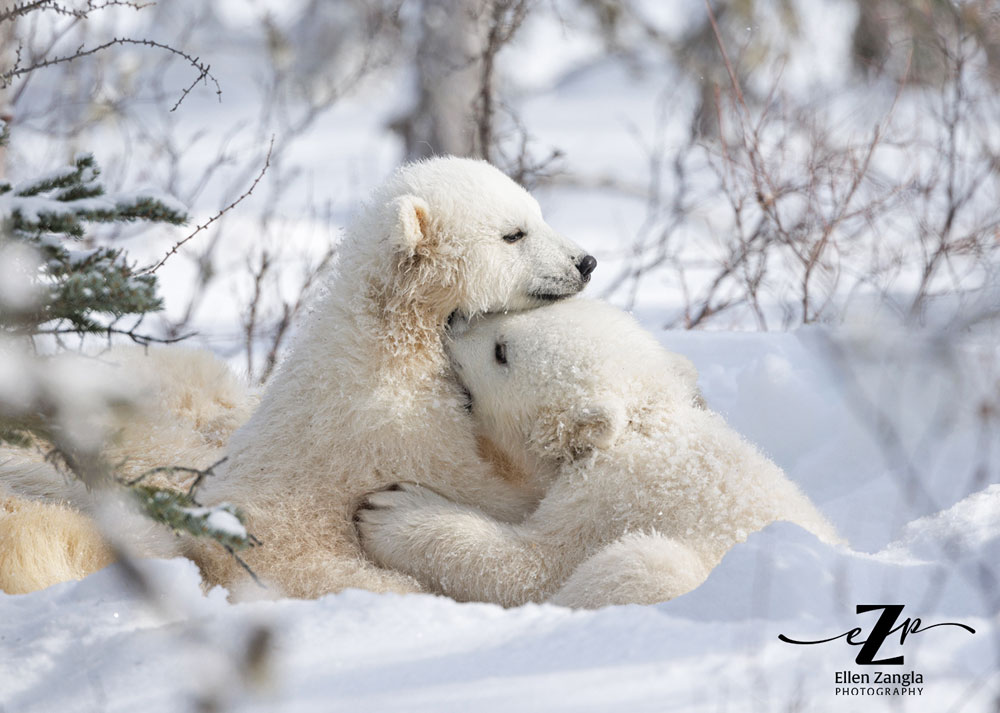
Polar bear cubs cuddling at Nanuk Polar Bear Lodge as Mom naps in the background. Ellen Zangla photo.
Soon the eyes will blink open, unveiling a realm of stark allure and crystalline splendor. The first sight? Mom’s adoring gaze, a beacon of security amidst what will soon be an unending expanse of white. Exploration of the den commences, a world ripe with novel scents and unfamiliar textures for the cubs.
When the cubs are about three months old, they emerge from the den, their curious eyes taking in the vast, white expanse of the Arctic for the first time. Though they are still small and vulnerable, they are ready to learn the ways of their world. And who better to teach them than their mother?
The outside world is an onslaught of sensations: the fierce bite of the wind, the blinding reflection of sunlight against the snow, and a never-ending icy horizon. With a soft prod from mom, the cubs venture forward into the sprawling whiteness.
The world beyond the den unfurls like an epic novel, brimming with trials and tribulations. The cubs learn to maneuver on the ice, to sprint, to joyfully slide down snow-coated slopes, and mom becomes their mentor, teaching them how to hunt and survive in the Arctic. Each action mom takes is a survival lesson, each movement a masterclass in hunting seals.
The cubs try to mirror mom, often with comical outcomes, yet every blunder is a stepping-stone towards survival. From playful wrestling to mock hunting, the cubs learn the crucial skills they need, and mom’s patience and dedication never wavers. It’s as if she understands the enormous responsibility on her massive shoulders – the survival of her cubs, and ultimately, the survival of her species.
The cubs will face many challenges including brutal weather conditions, dangerous shape-shifting sea ice, lack of food, and predators, including adult male polar bears. Mom plays a crucial role in protecting her cubs from potential threats, teaching them both survival skills and how to defend themselves.
The first year is a whirlwind of growth and discovery. The cubs have increased tenfold in size. They have learned the basics of hunting, swimming, and surviving. No longer defenseless infants, the young polar bears are prepared to traverse the icy wilderness they call home.
In the second year, the bond with mom remains potent, a beacon of love and support, but slowly the ties begin to loosen as the cubs grow more self-reliant and venture away from mom, sometimes vanishing from sight for hours, hunting solo, learning from their own successes and failures.
By the close of the second year, the cubs have grown nearly to match their mother in size and are almost independent. At some point, usually between the ages of two and three, the time arrives for the cubs to part ways with mom and venture into the wilderness alone.
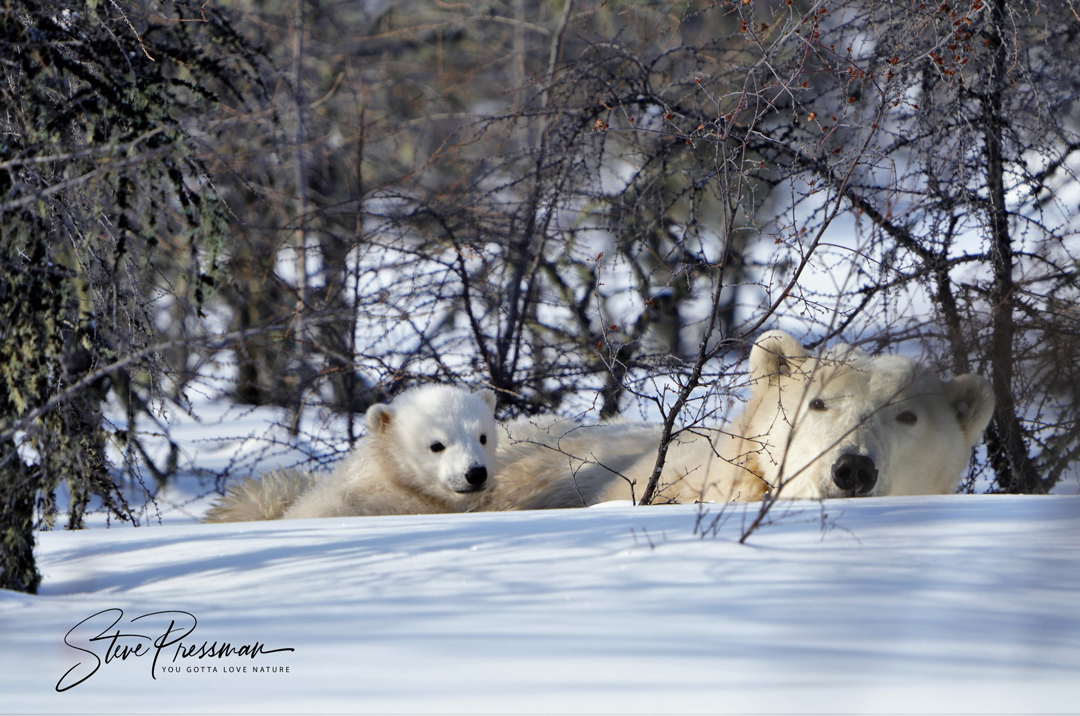
Mom and cubs in the boreal forest at Nanuk Polar Bear Lodge. Steve Pressman / YouGottaLoveNature.com photo.
It’s a bitter-sweet goodbye that can sometimes include lingering gazes and hesitant steps, but ultimately, the cubs leave their childhood behind and step into the beautiful but often harsh world of the Arctic as young adults.
The young polar bears begin to shape their own path through their Arctic playground. Each ice floe becomes a stepping-stone, every snowdrift a potential hideaway. The wind carries a thousand stories in each gust, every ripple of water hides a myriad of secrets. The landscape, once daunting and expansive, now beckons with the promise of adventure and discovery.
The young polar bears learn to trust their instincts, to interpret the subtle signs written in the snow, to attend to the whispers carried on the wind. They learn the language of the ice, the lore of the sea, and become one with the land, solitary figures against the expanse of white, creatures of ice and snow, of wind and water.
Beneath their growing confidence, the thrill of the hunt, and the joy of discovery, there is a poignant undercurrent of nostalgia. There are moments when the young bears may pause and look back towards the horizon, perhaps reminiscing about the warmth of mom, the safety of the den, the simplicity of those early days. It’s a heart-tugging reminder of the fleeting nature of childhood and the relentless march of time.
The bond between a mother polar bear and her cubs is a tale of love, survival, and sacrifice formed under the harshest of conditions, strengthened through shared experiences, and ultimately loosened to enable the next generation’s survival. It’s a story that resonates with us, reminding us of the deep bonds of love and care that bind us together, whether human or animal, and a testament to mothers everywhere.
Happy Mother’s Day!

